
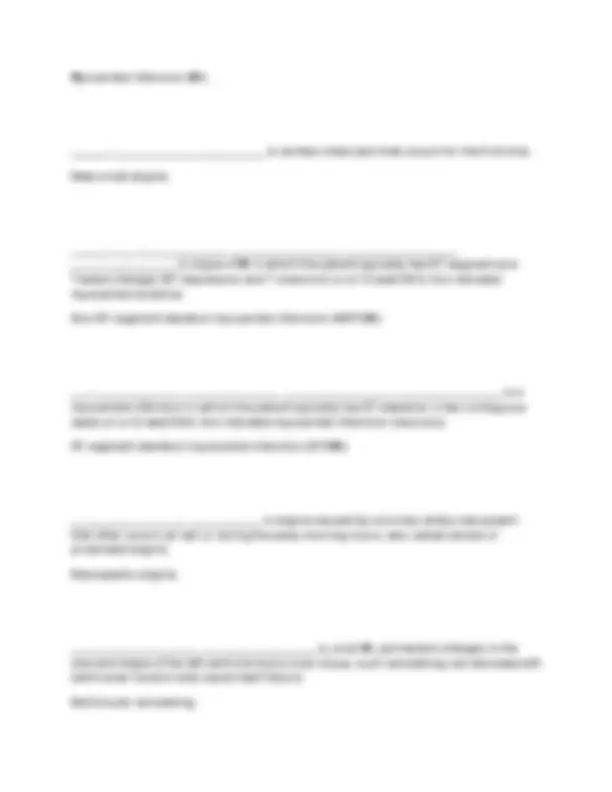
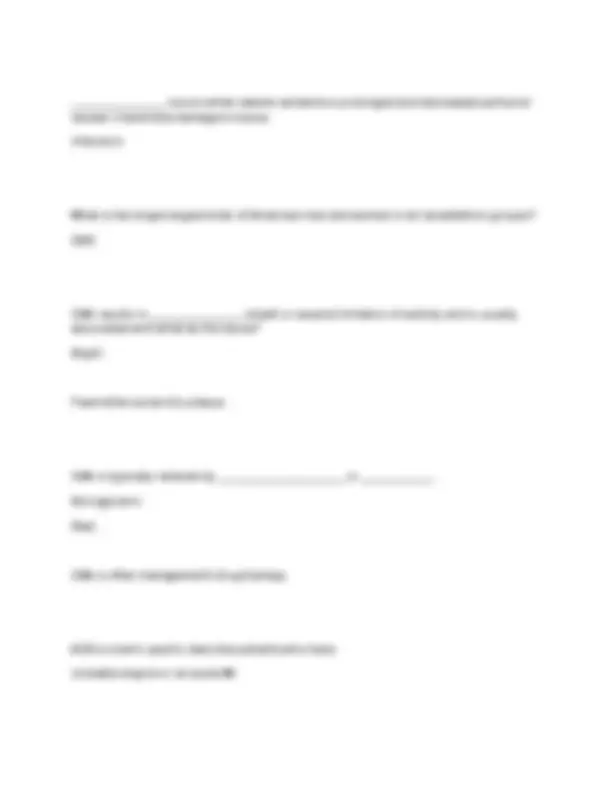
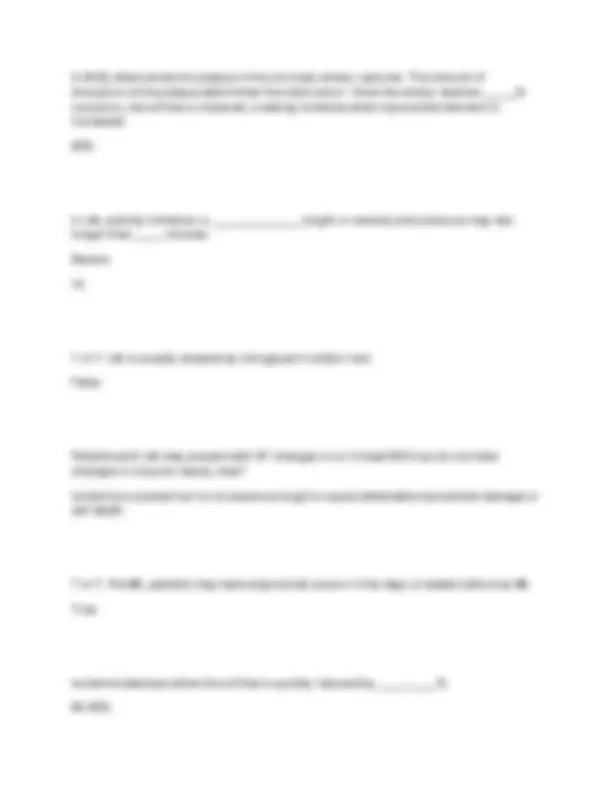
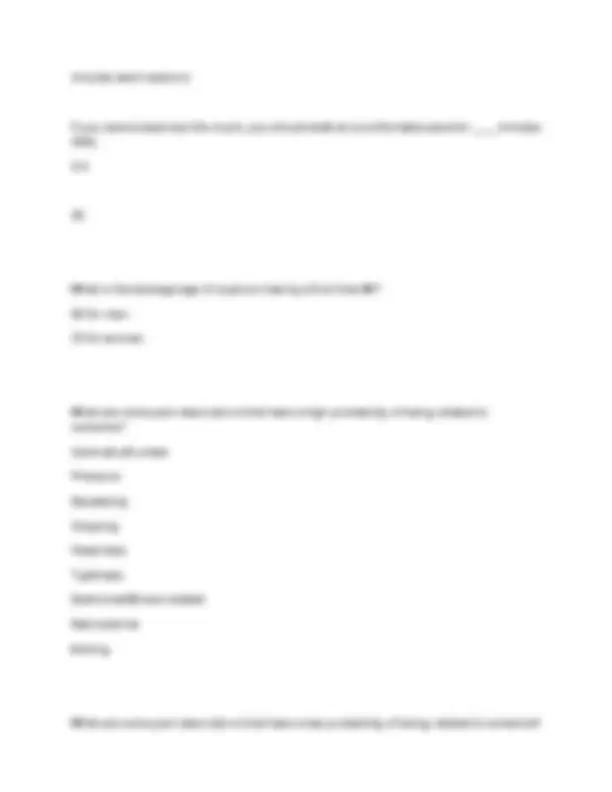

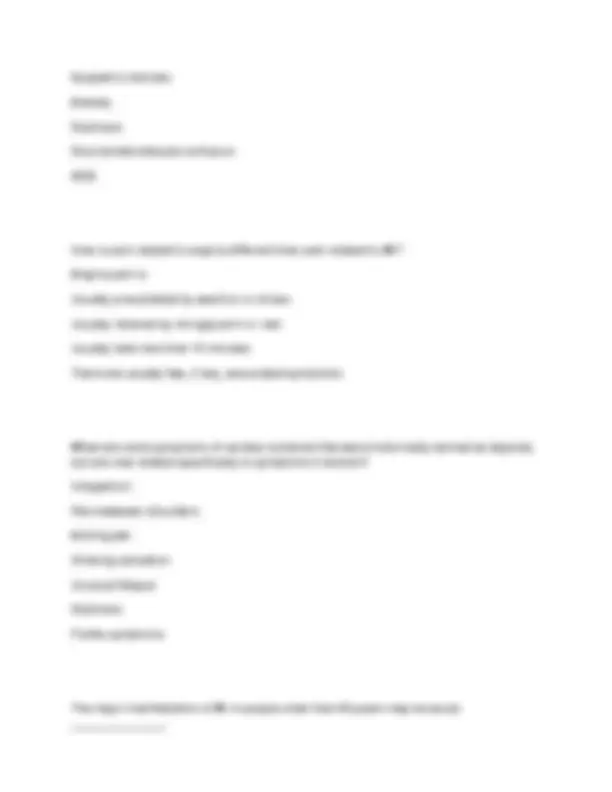
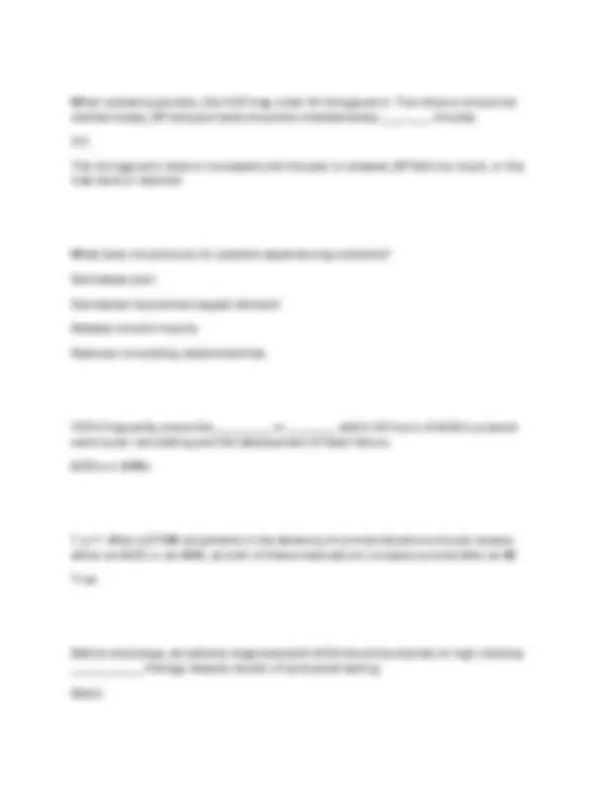
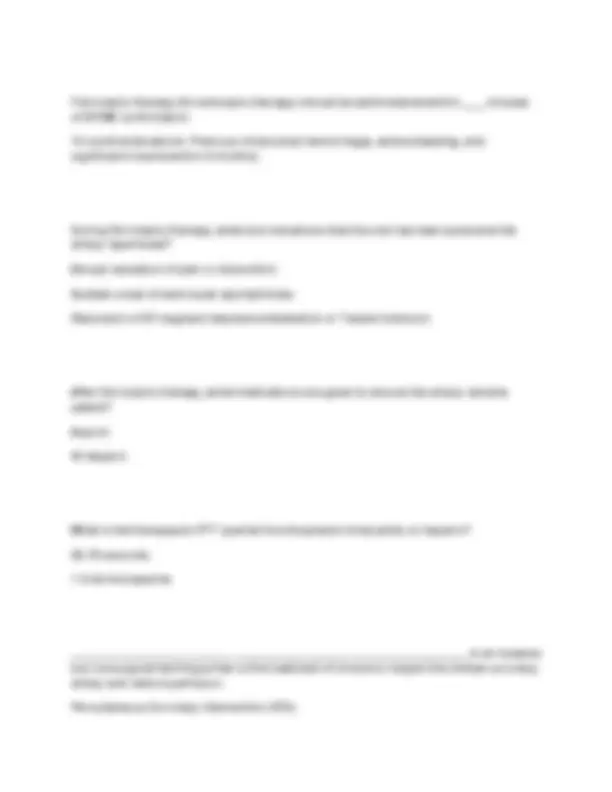
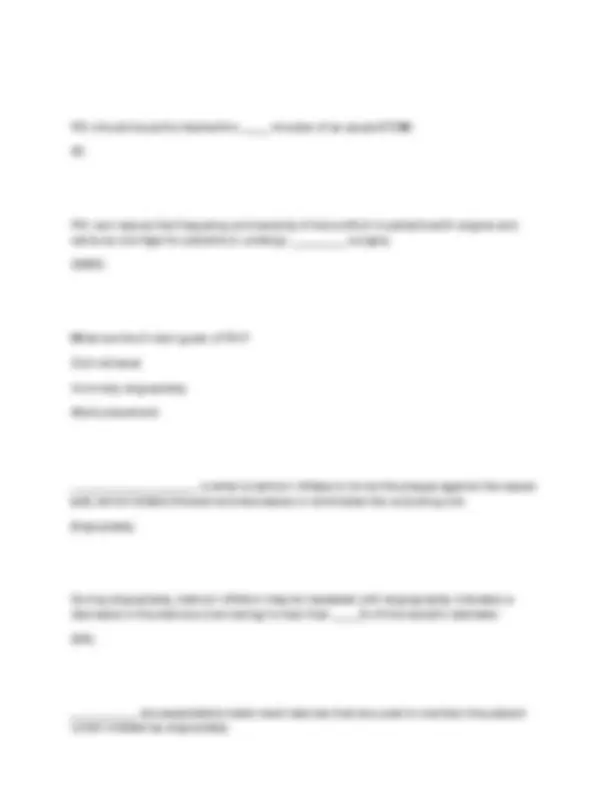
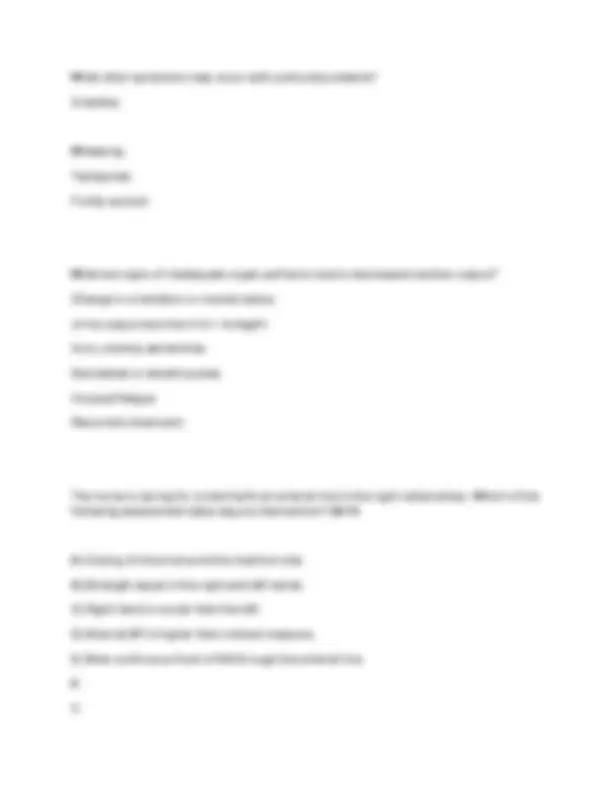
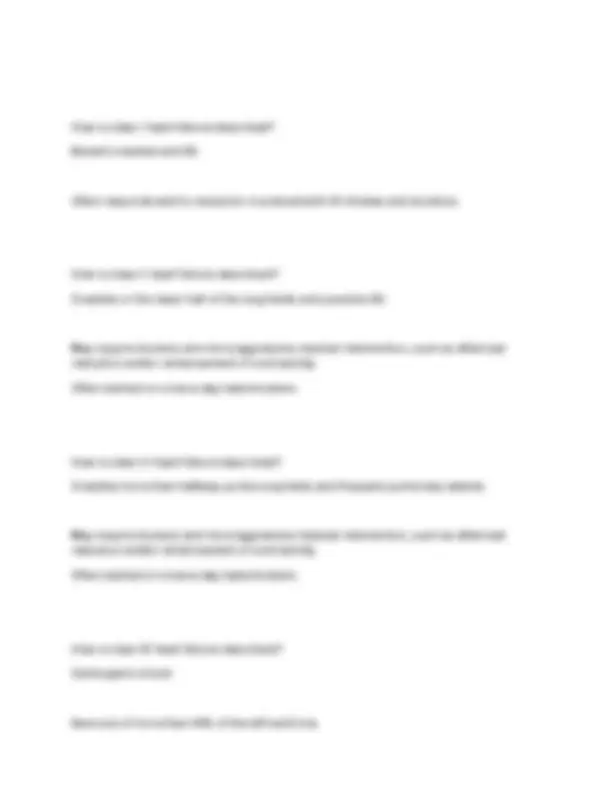
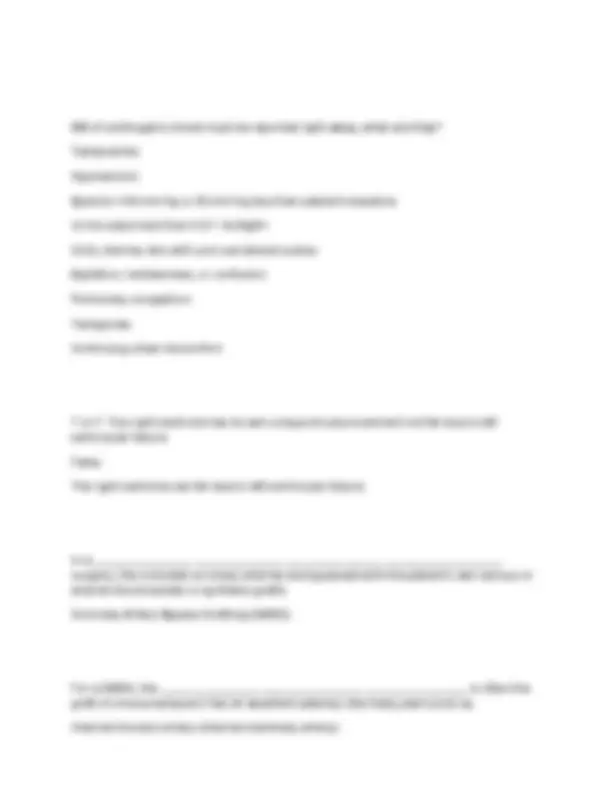
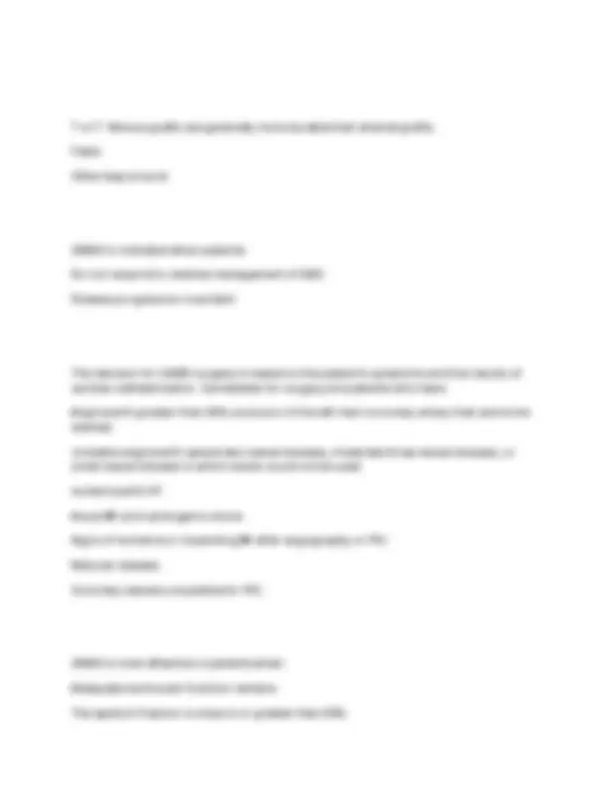
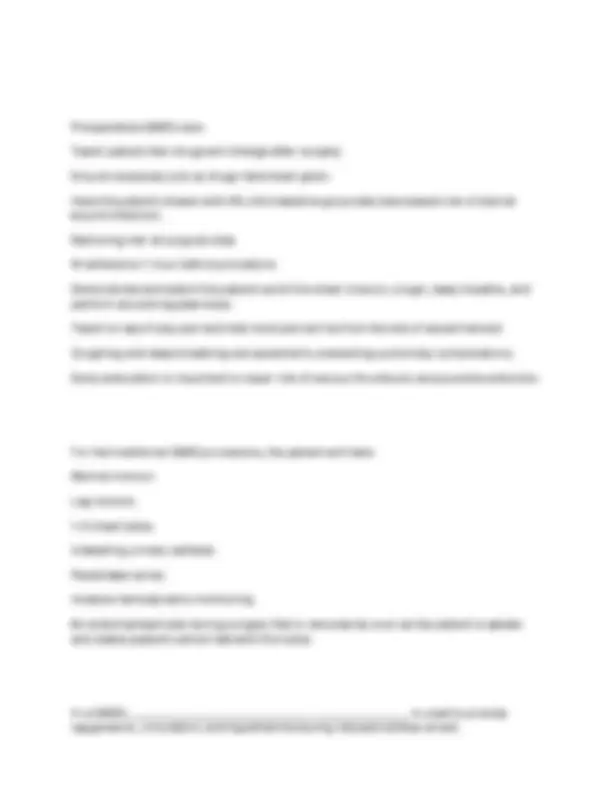
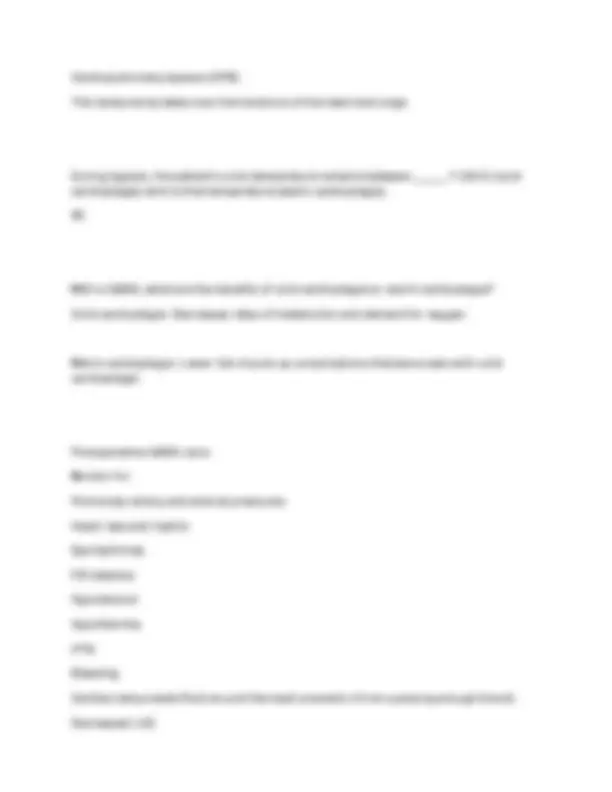
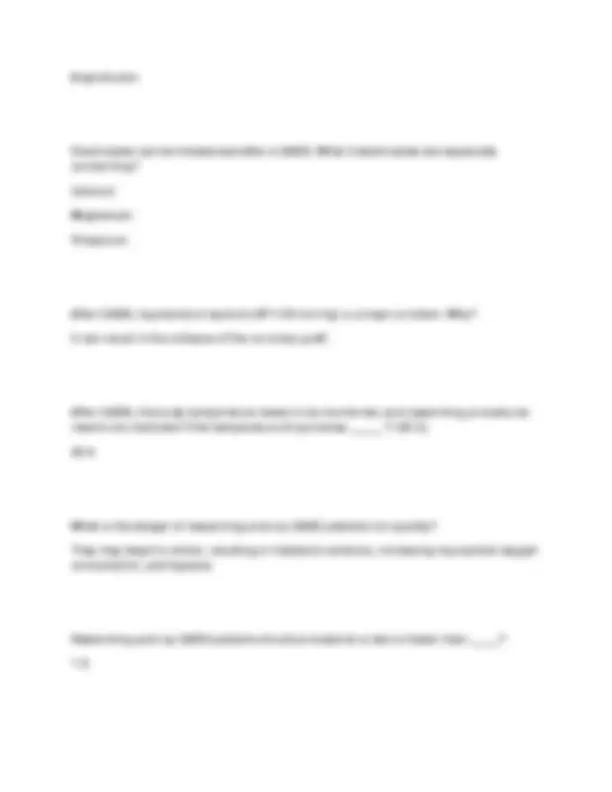
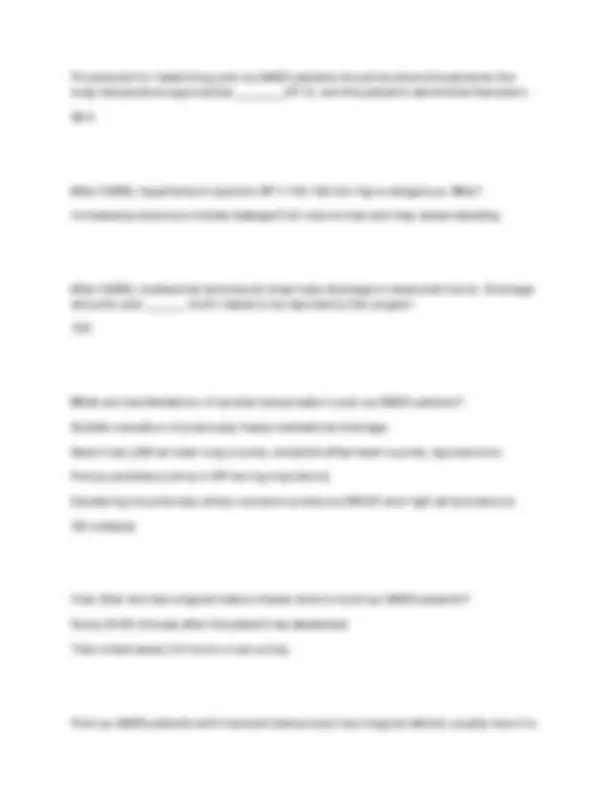
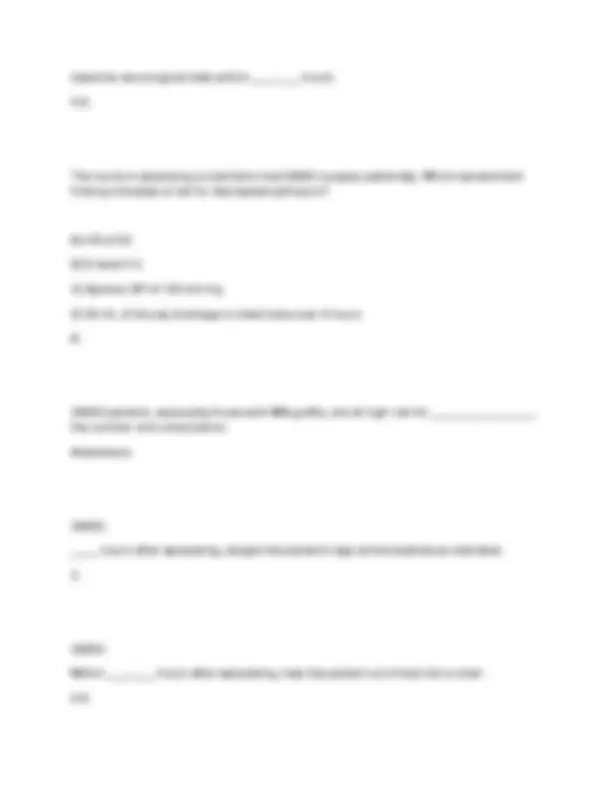
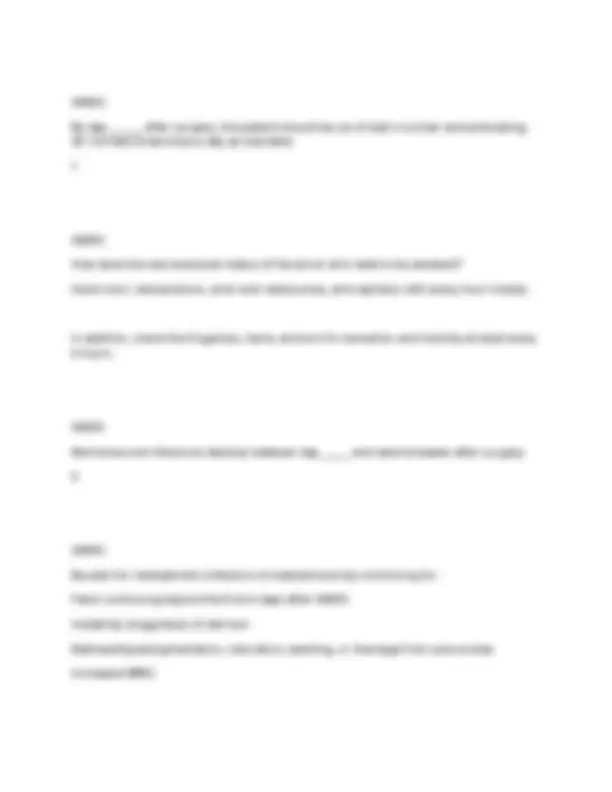
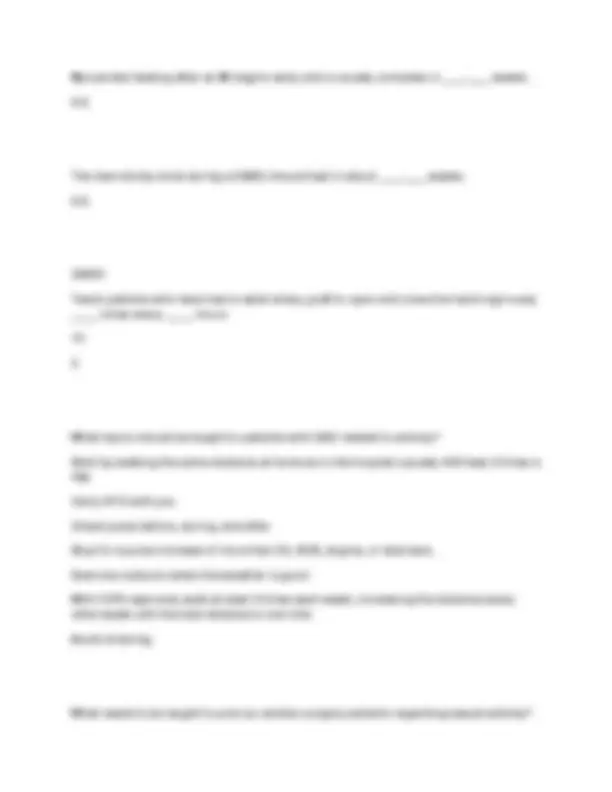
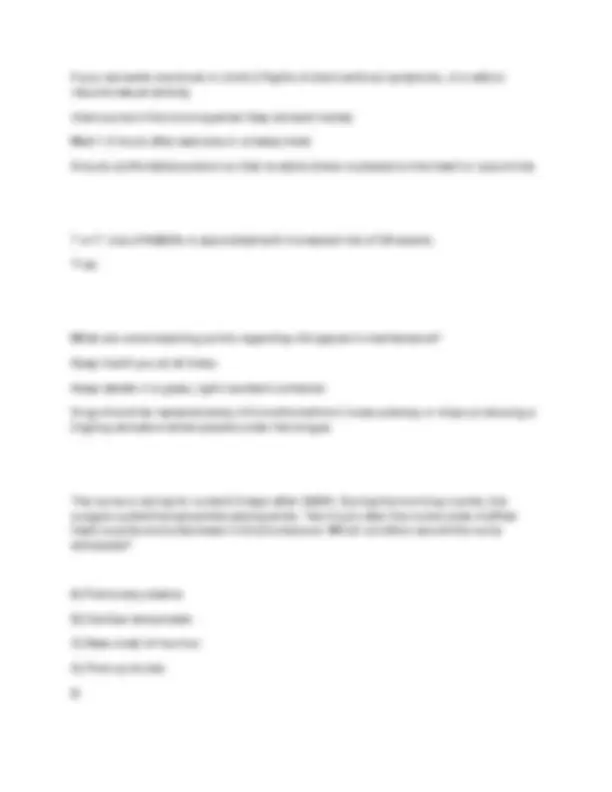
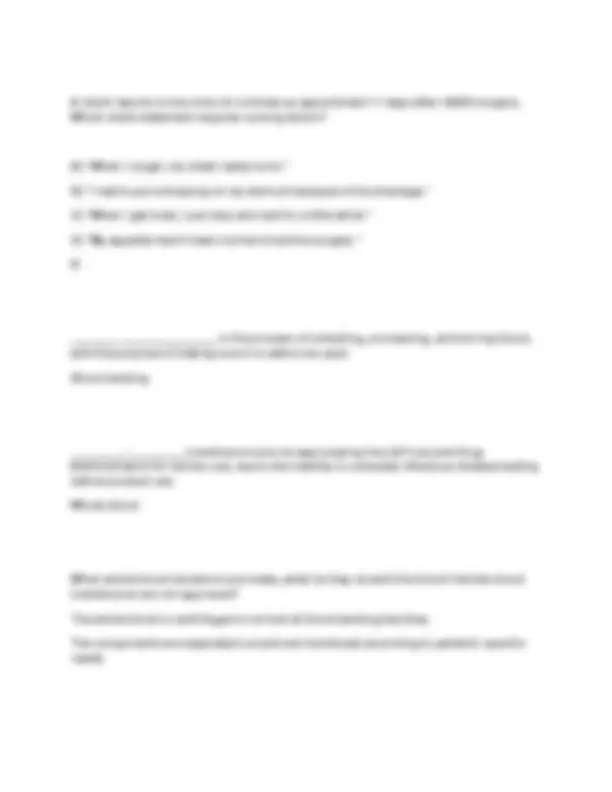
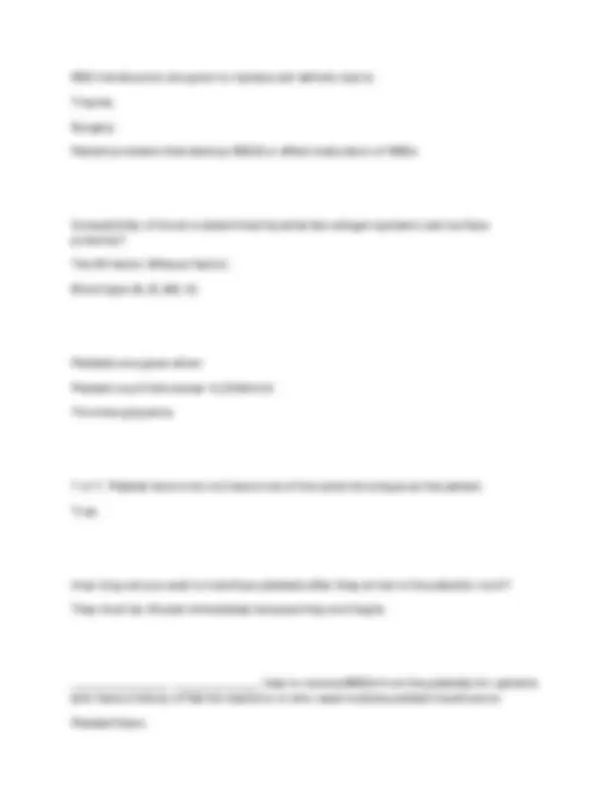
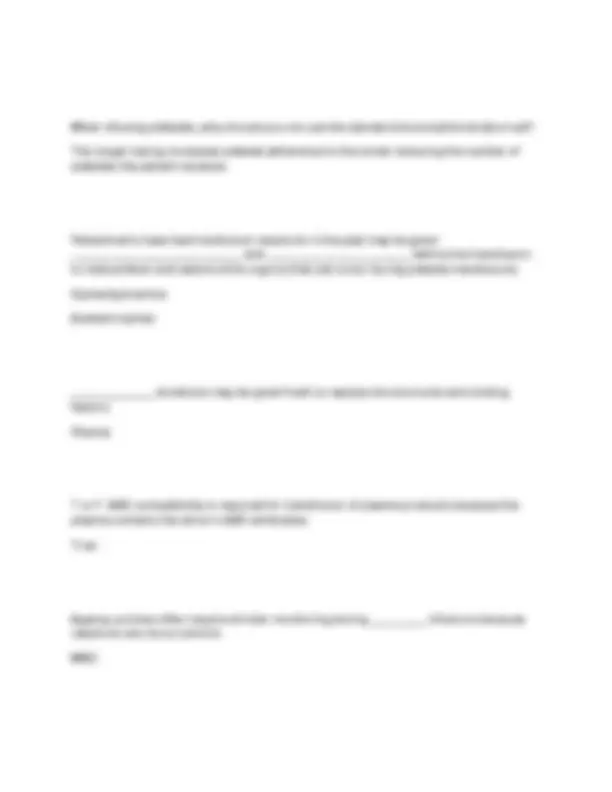
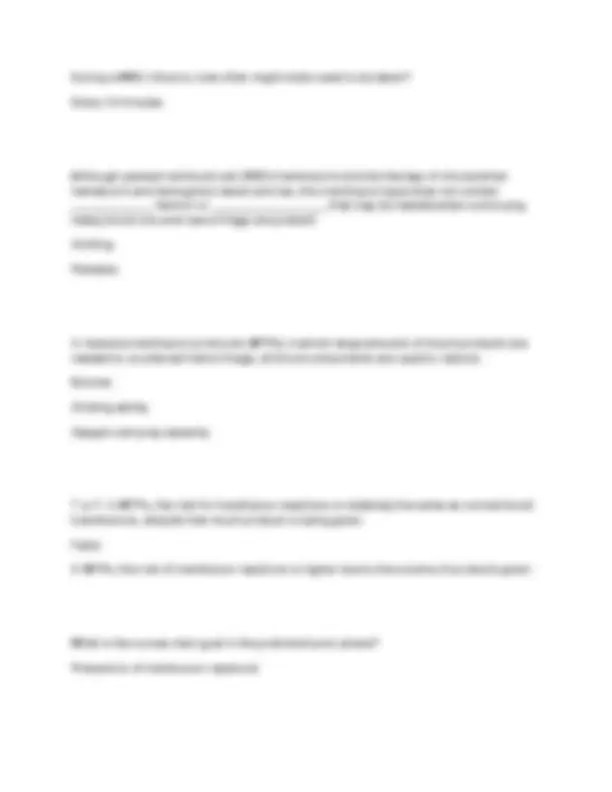
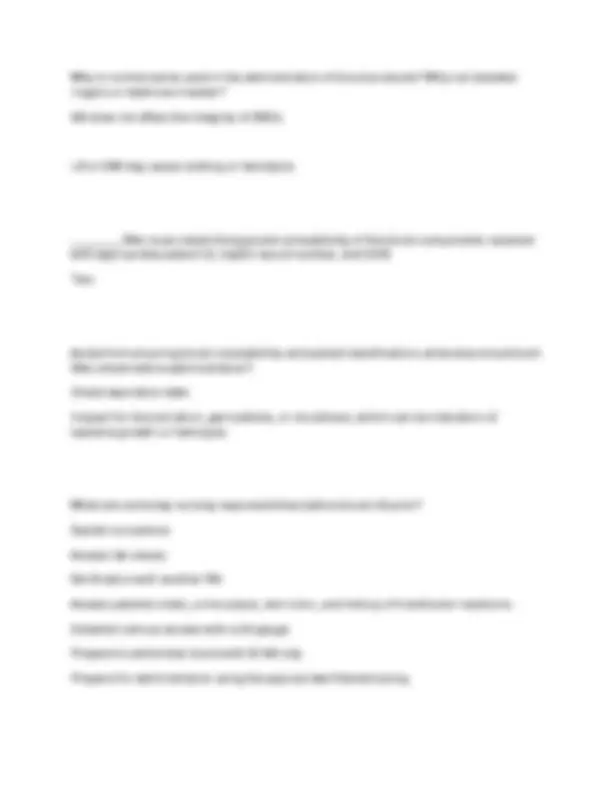
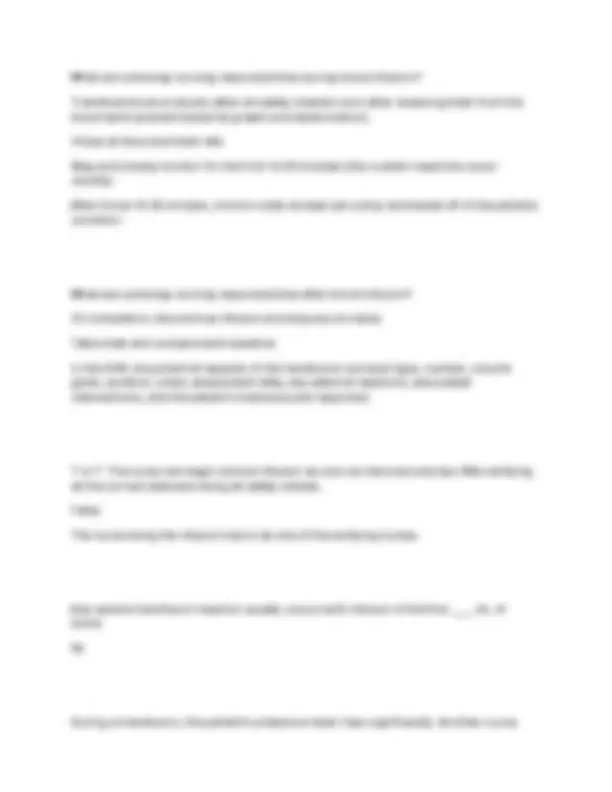
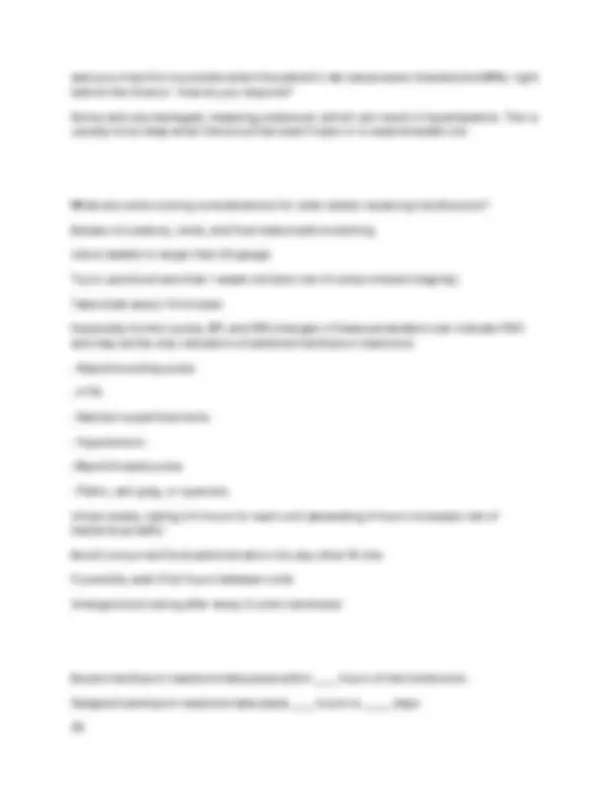
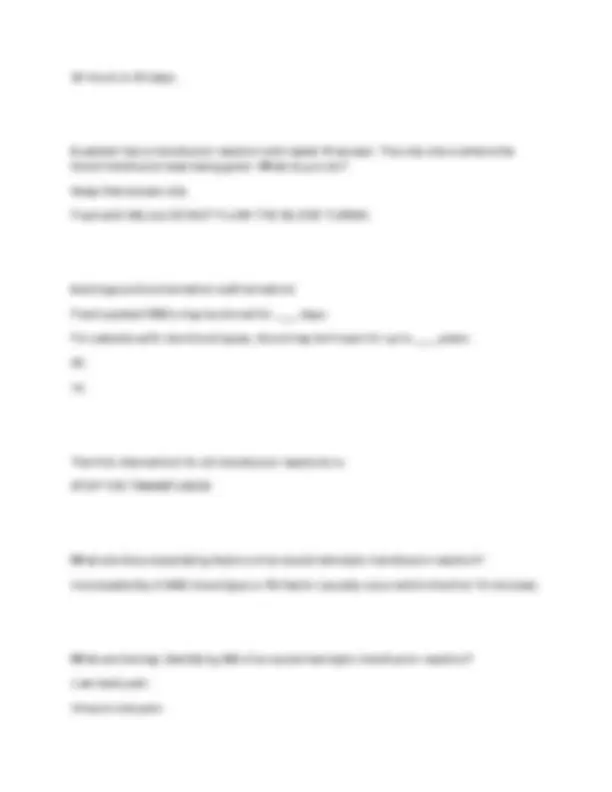

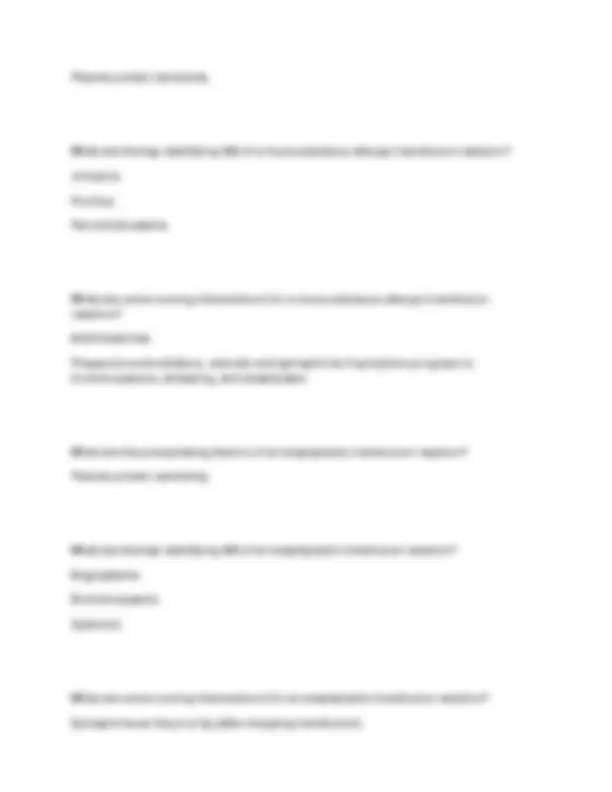
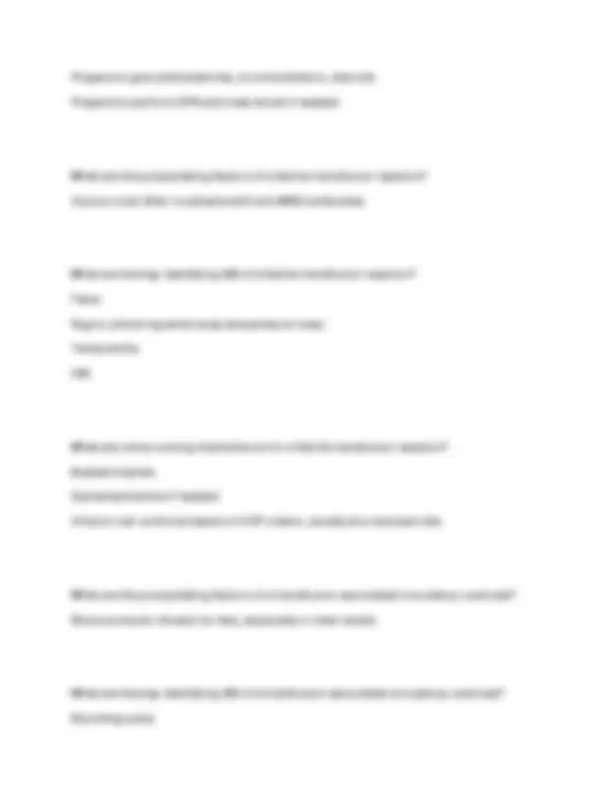
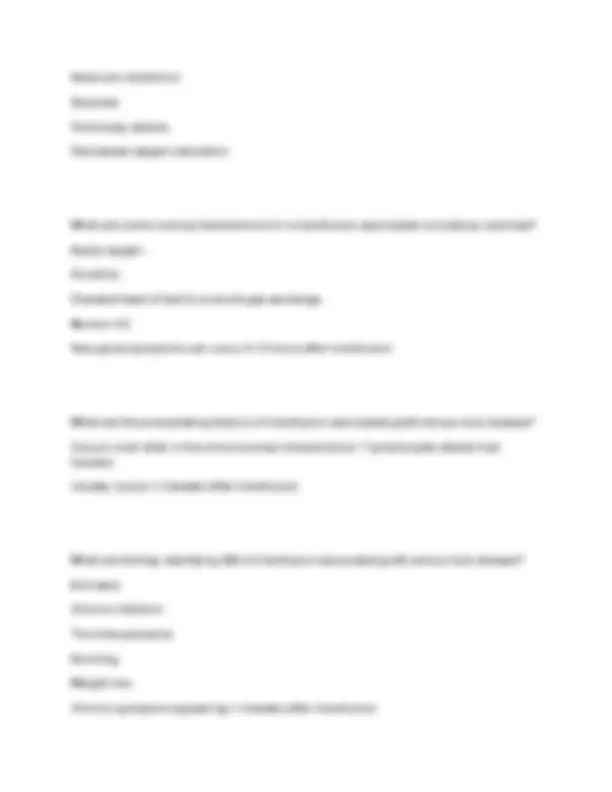
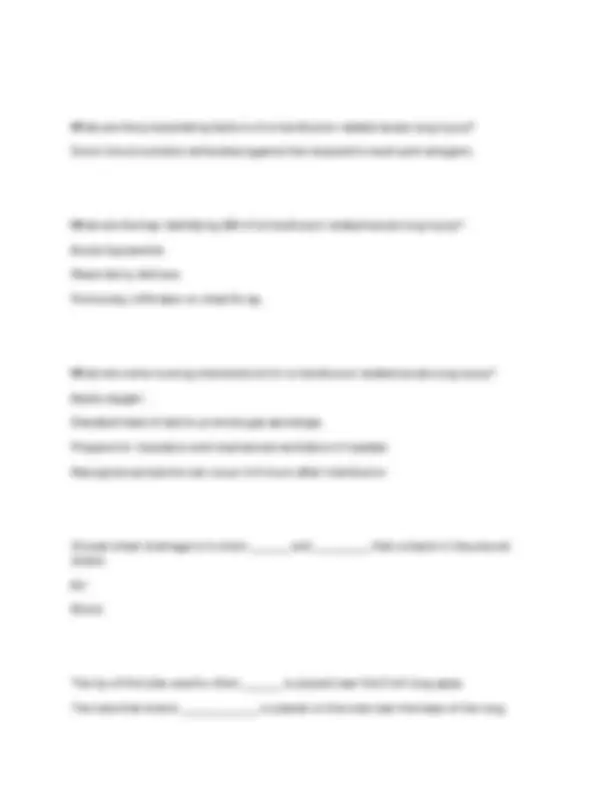
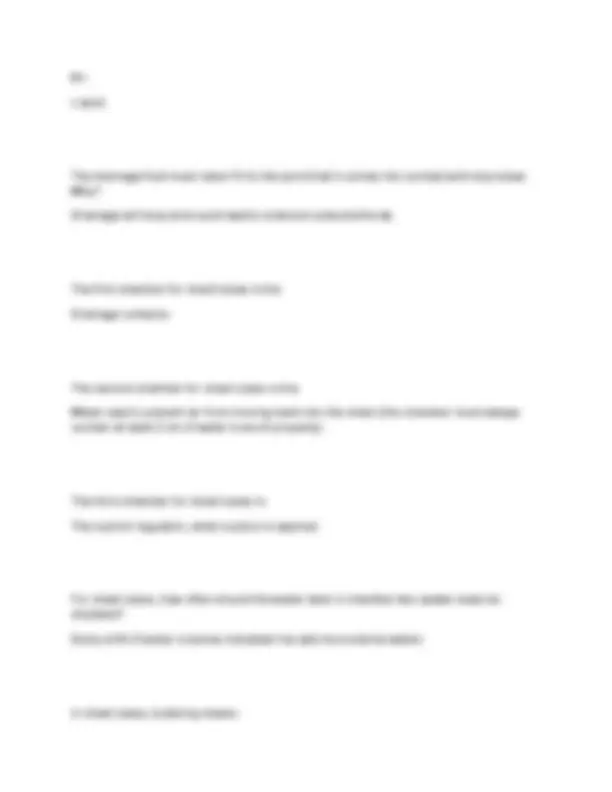
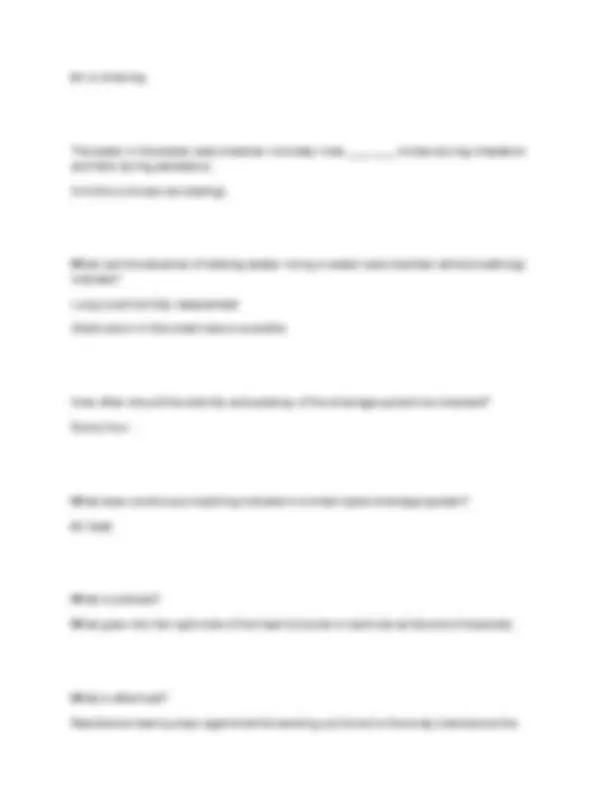
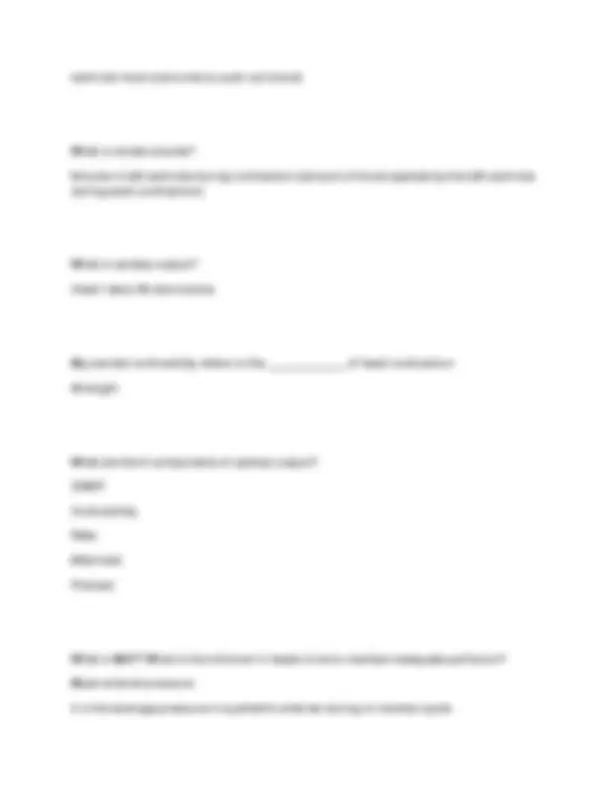
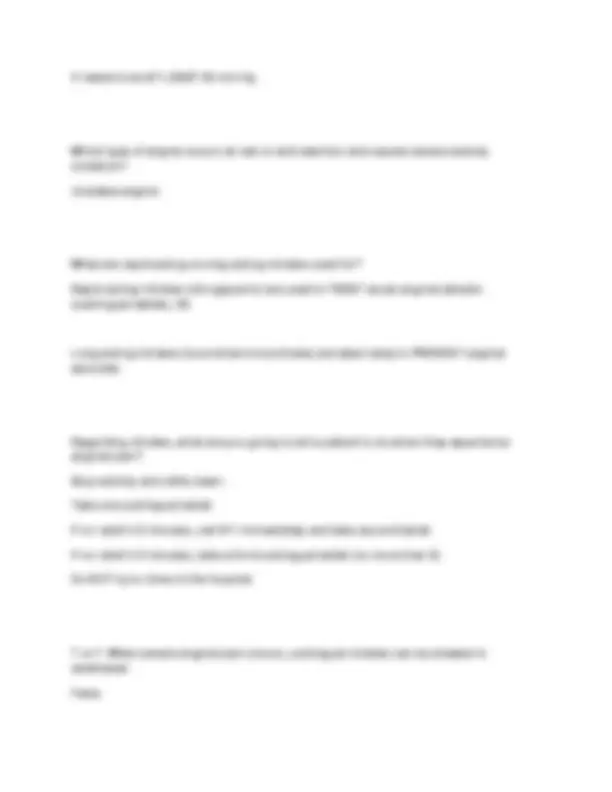
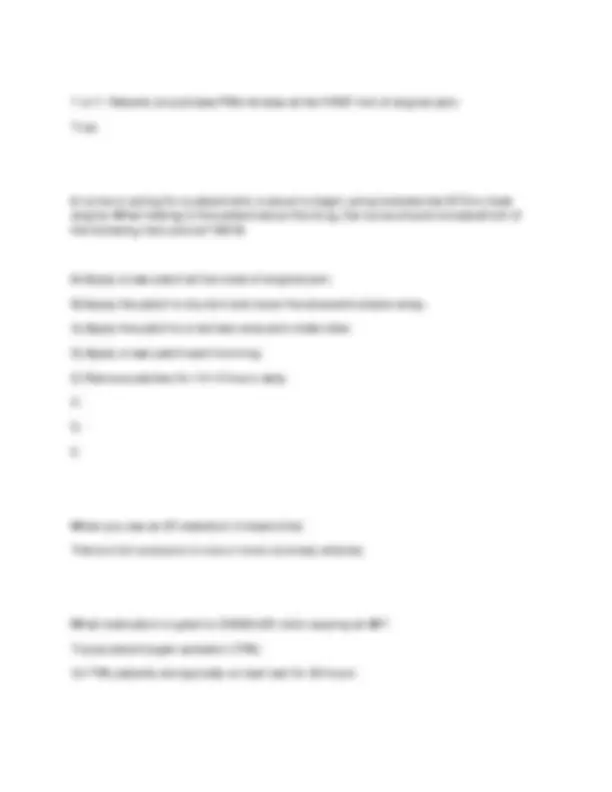
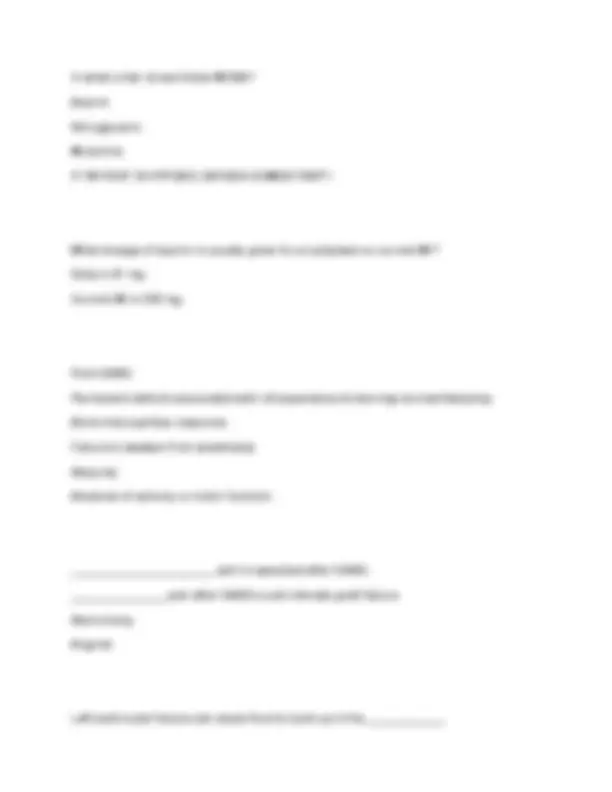
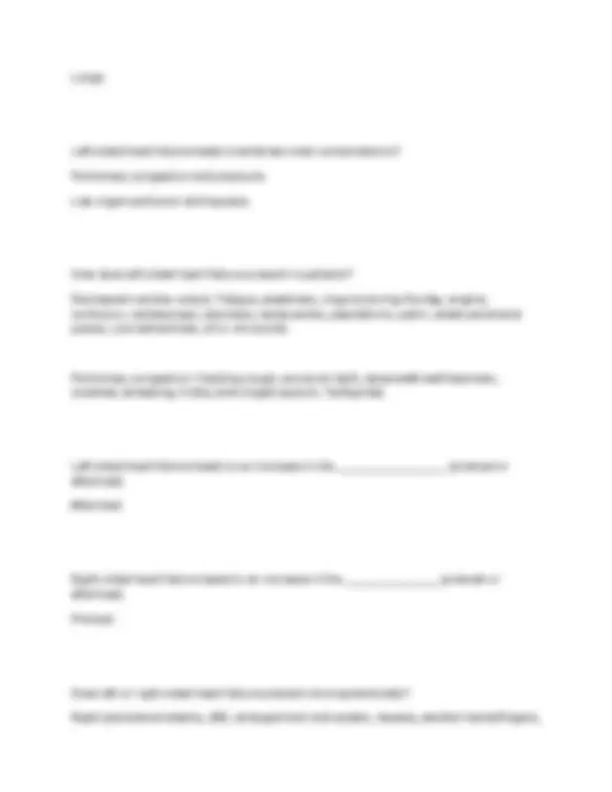
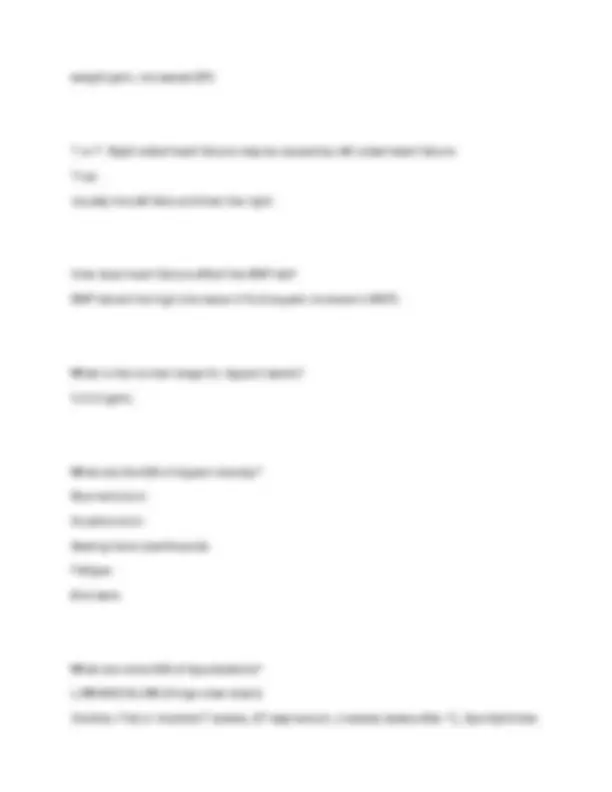
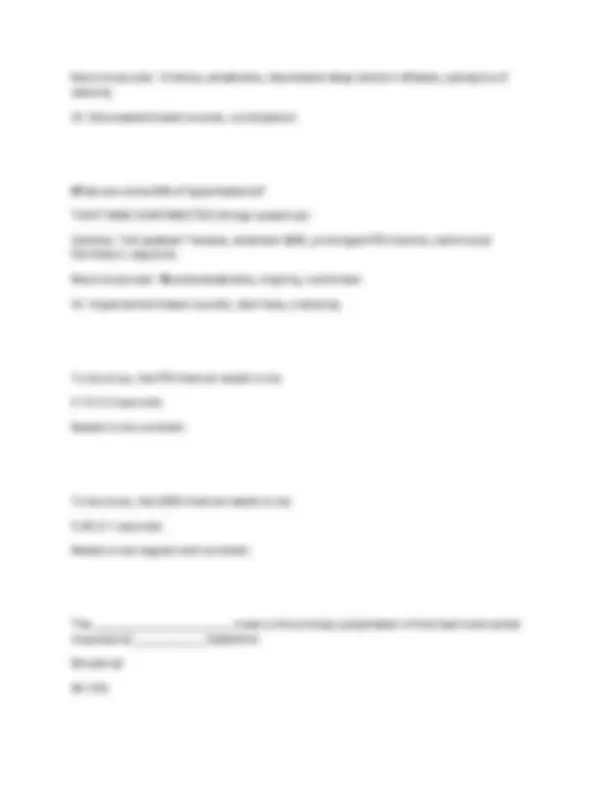
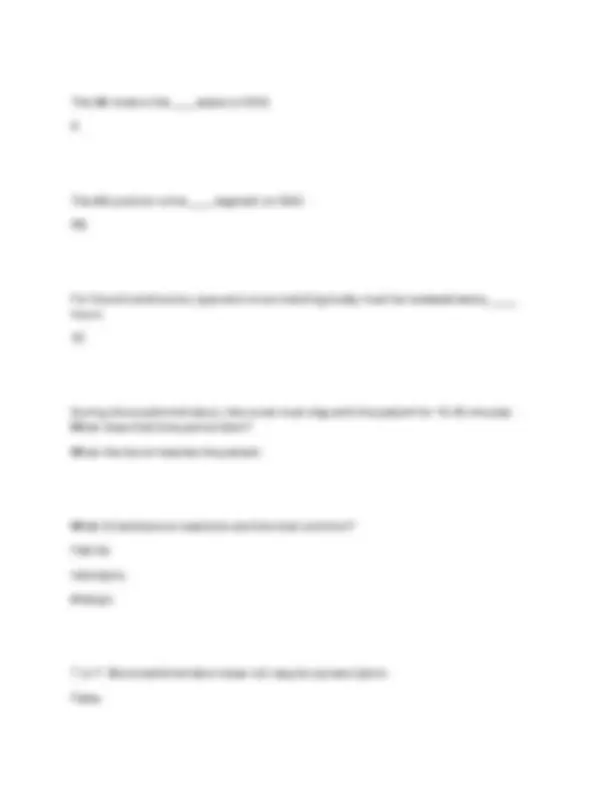
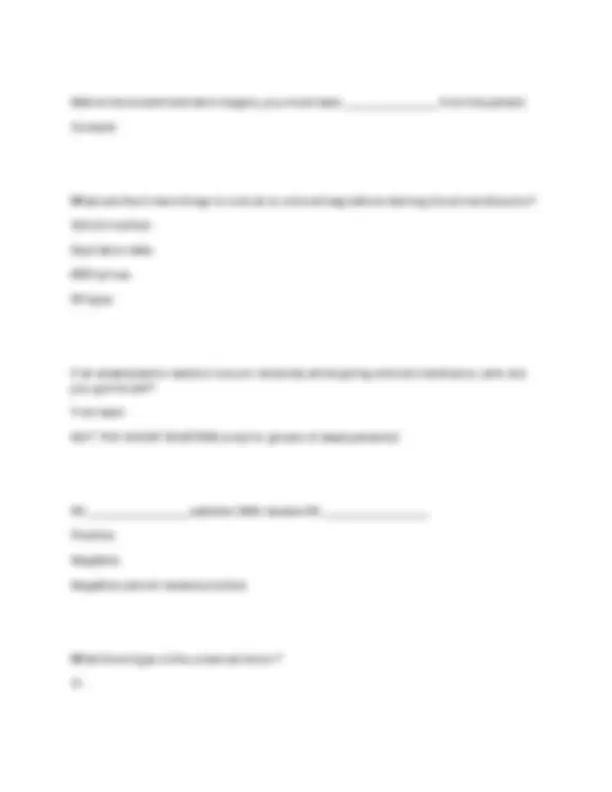
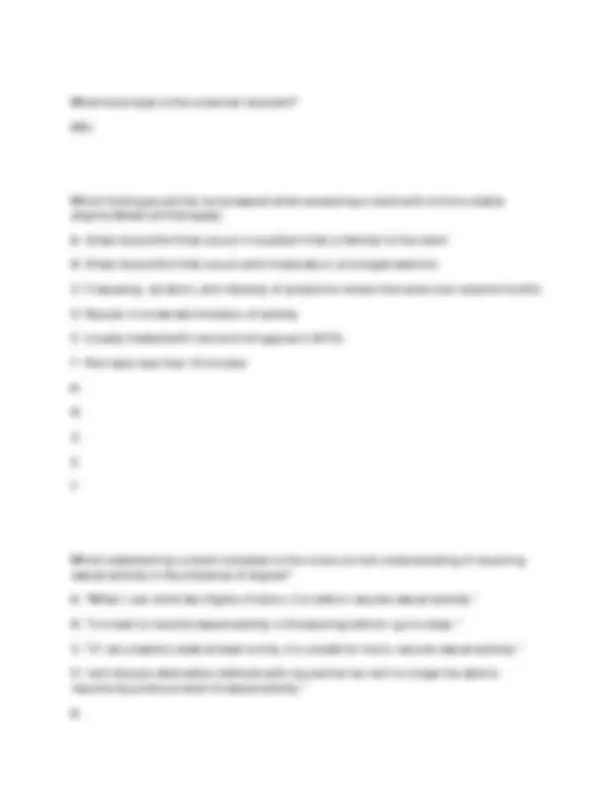
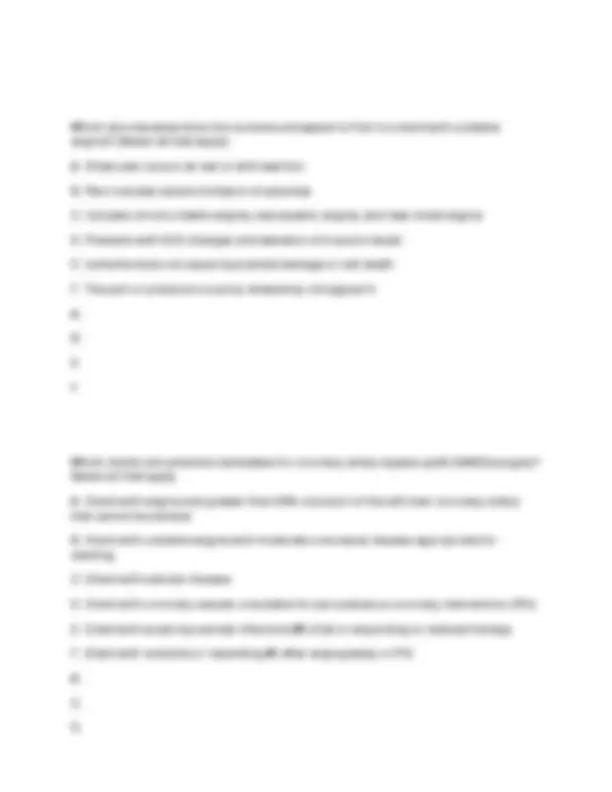
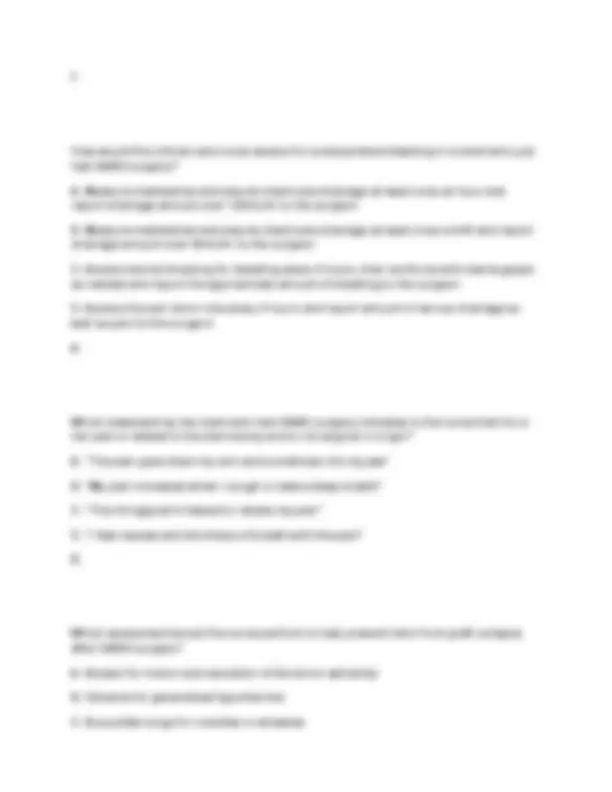
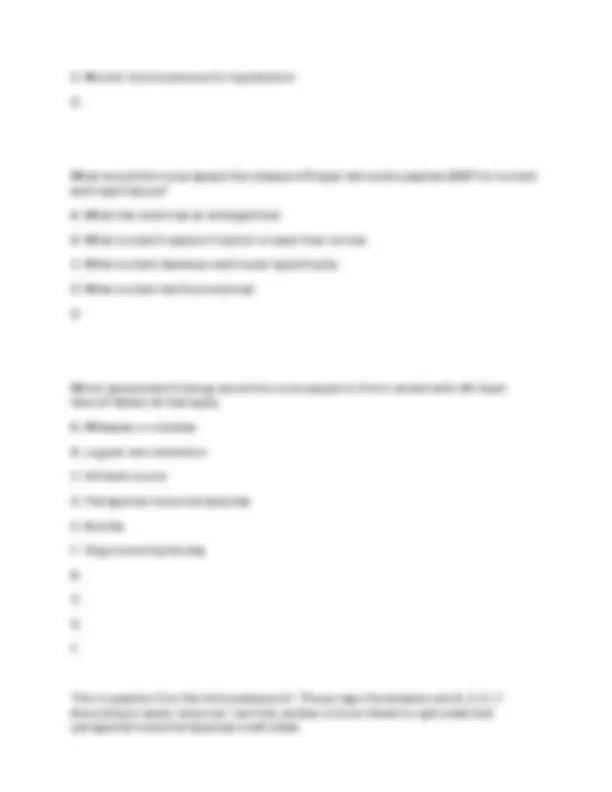
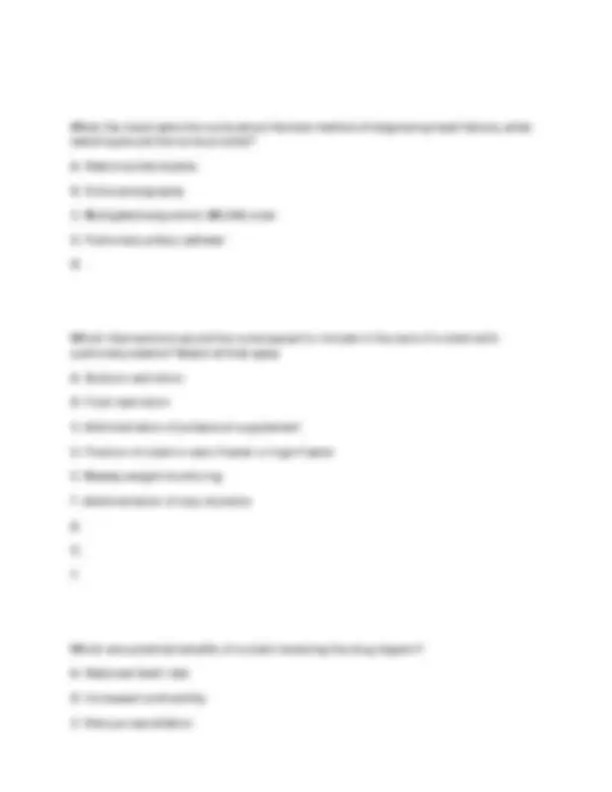
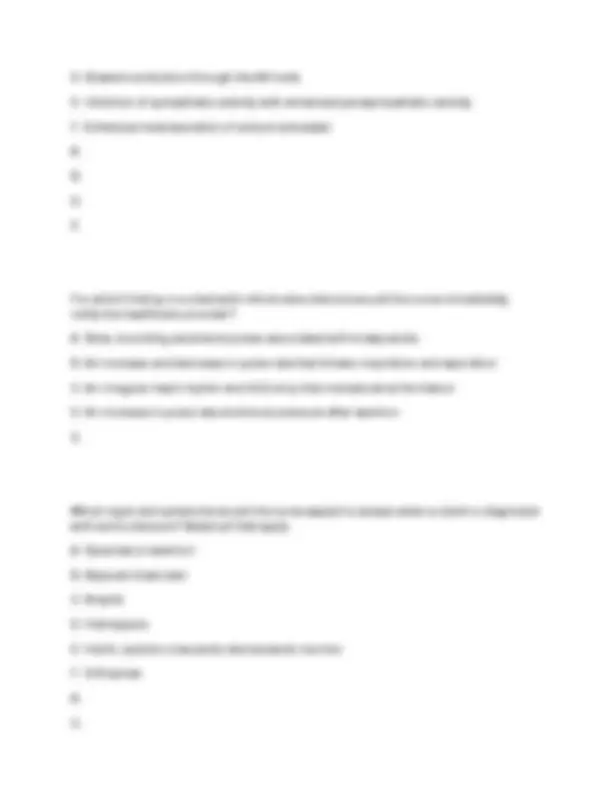
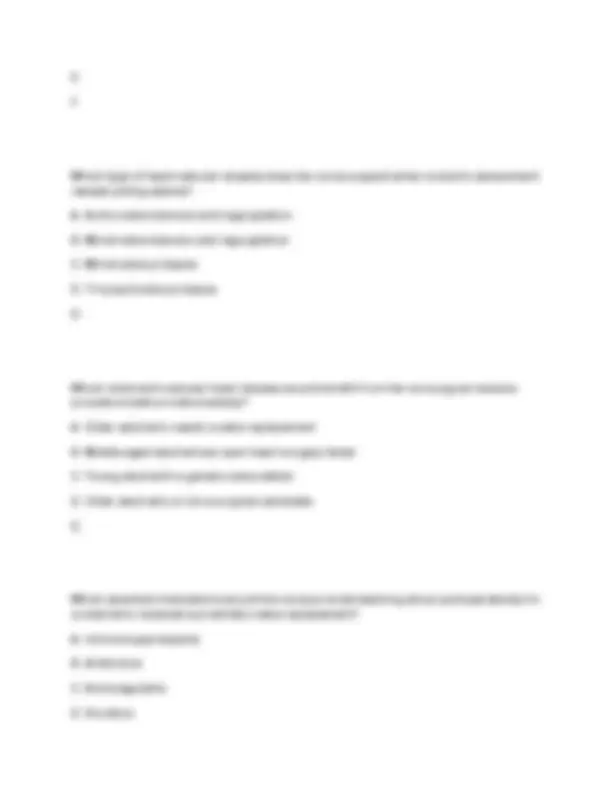
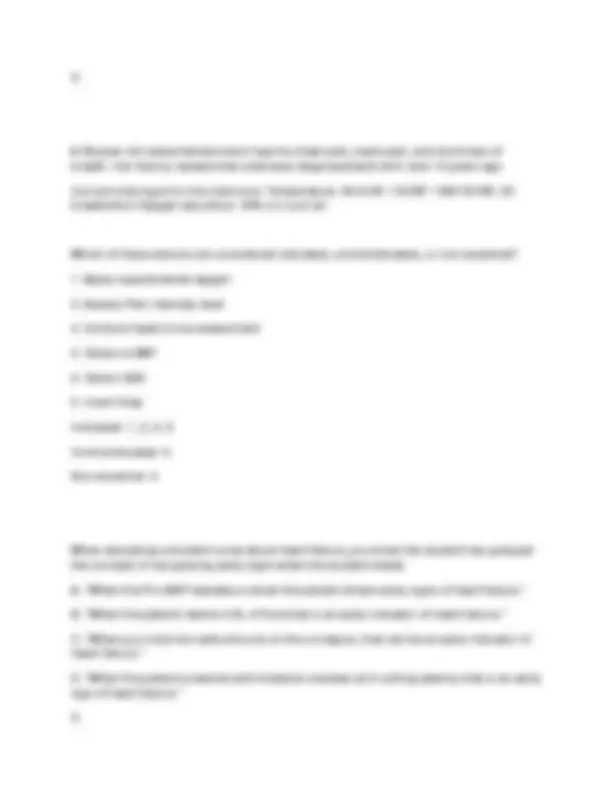
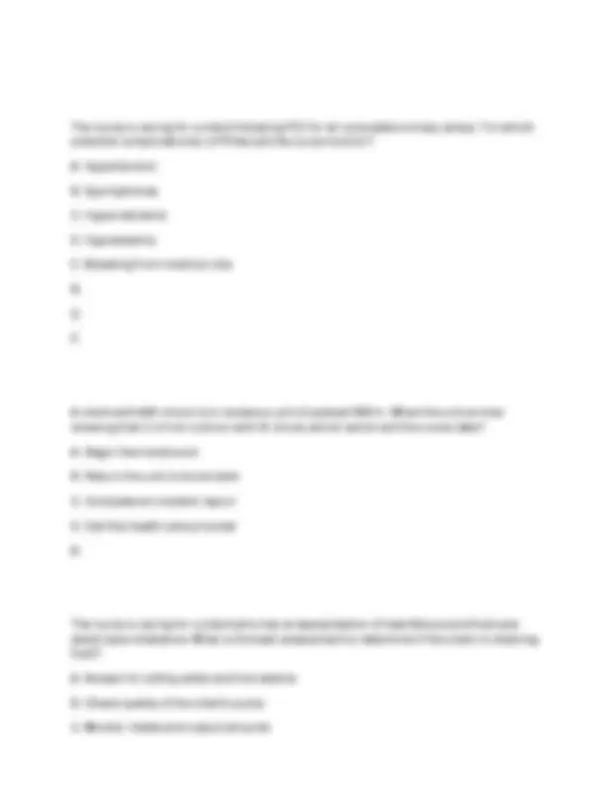
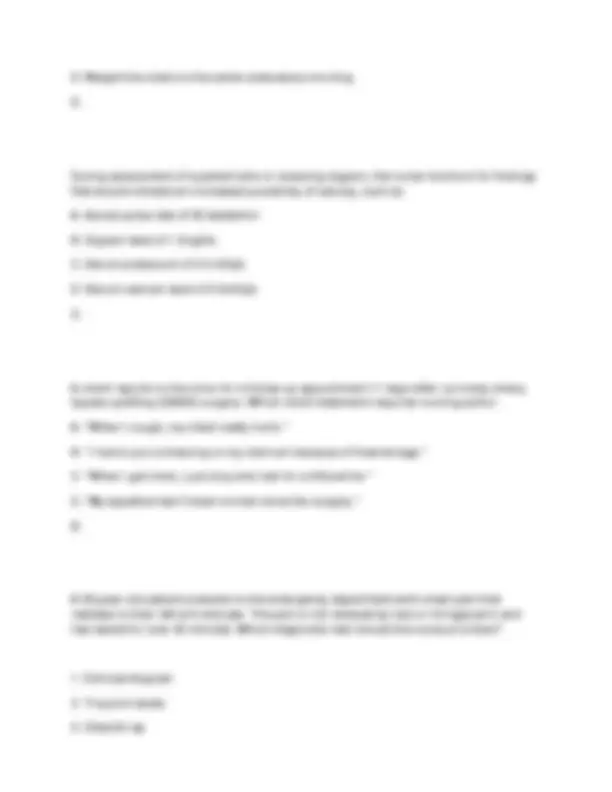
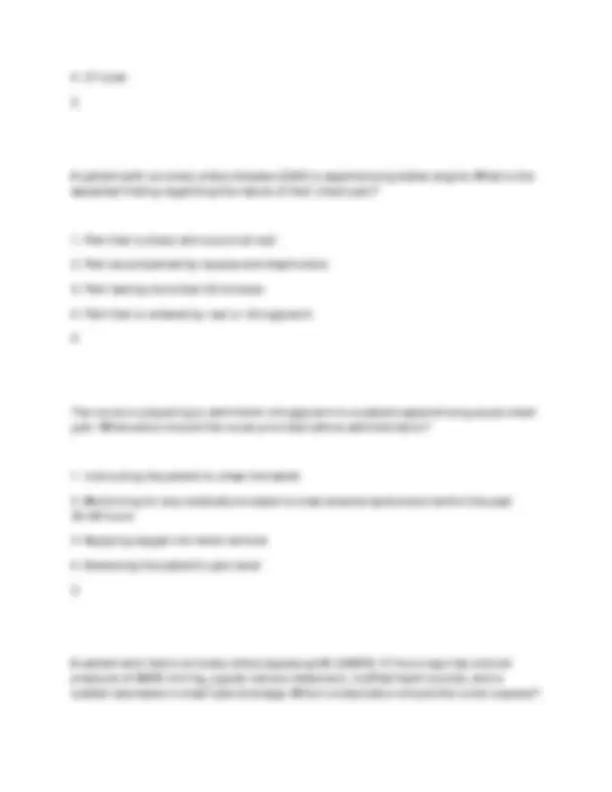
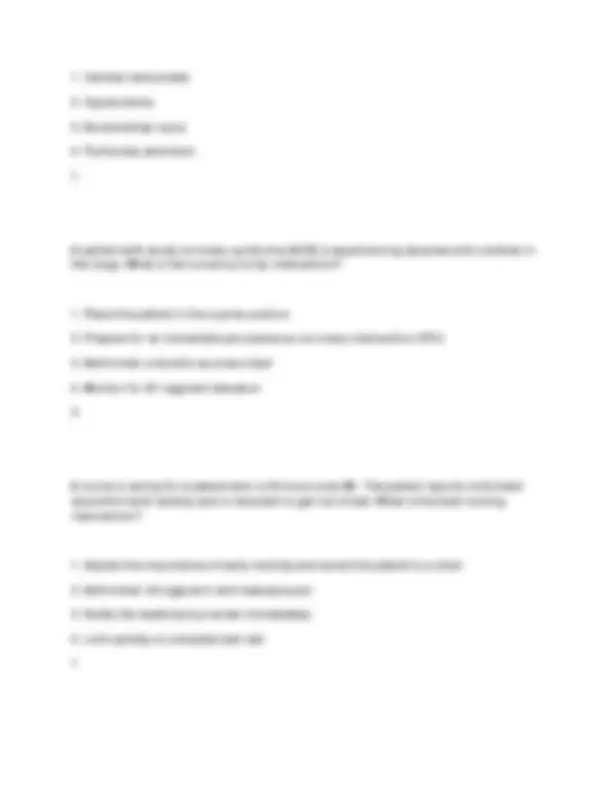
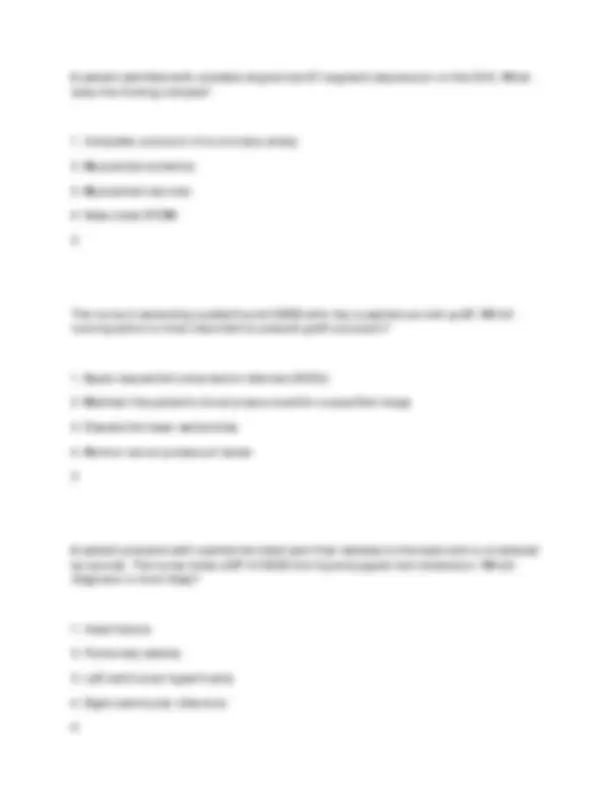
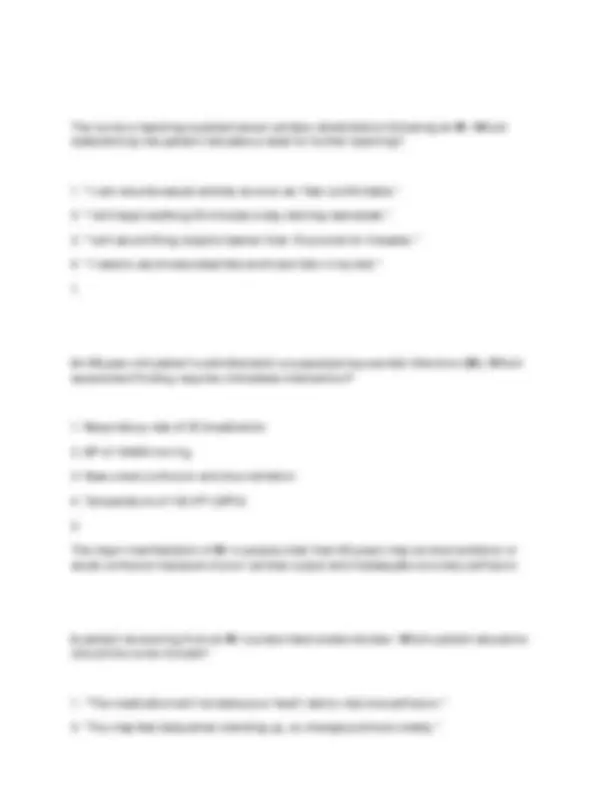
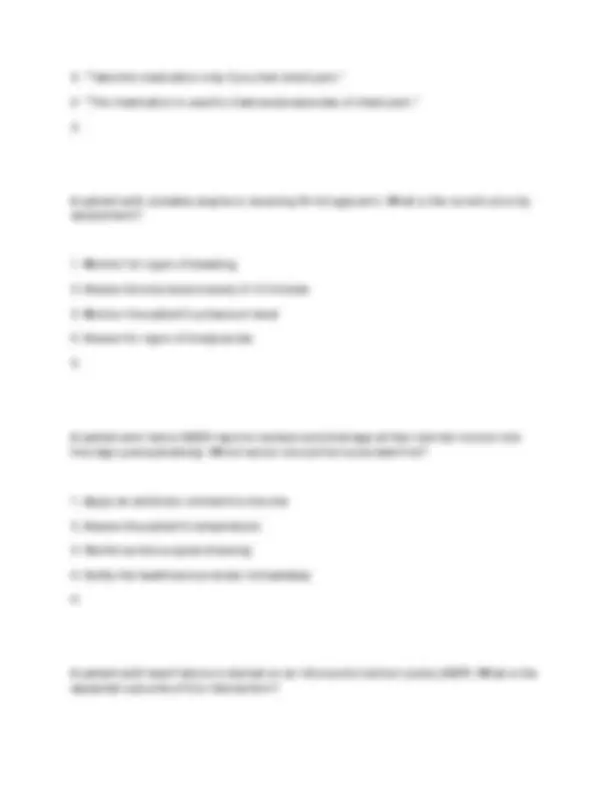
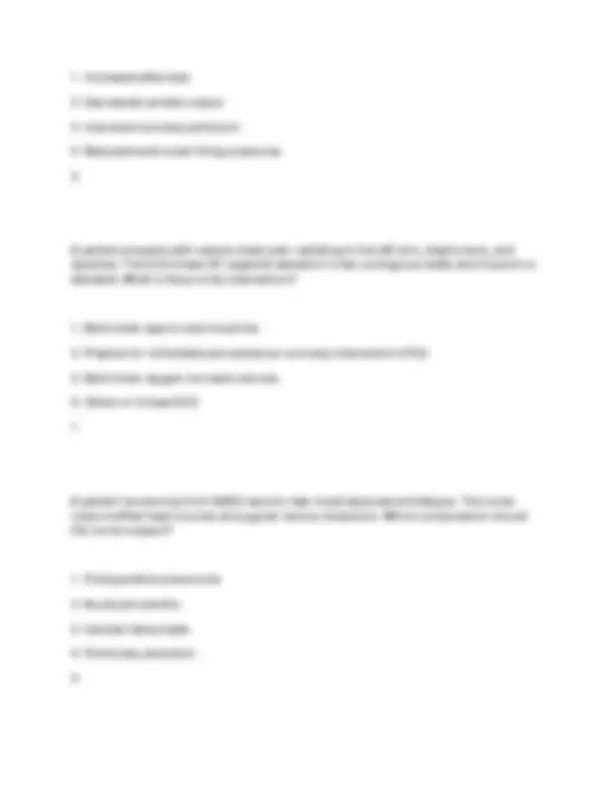
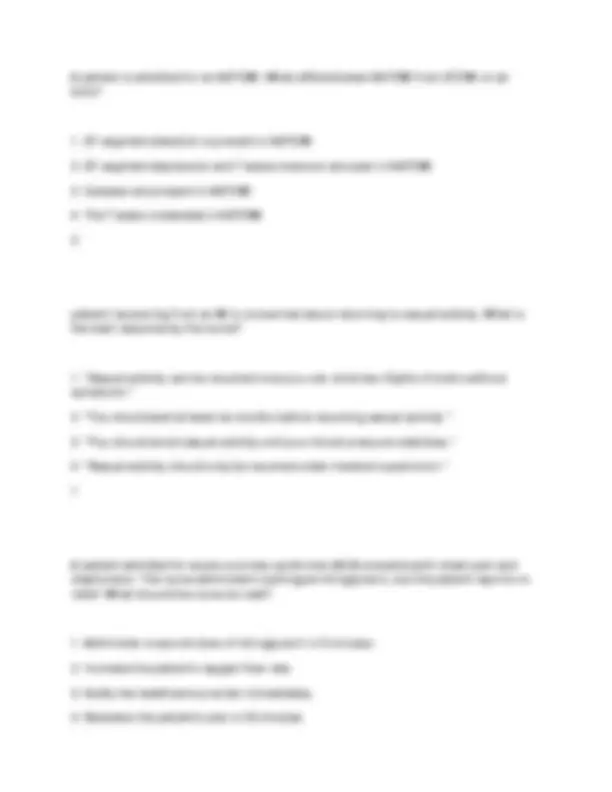
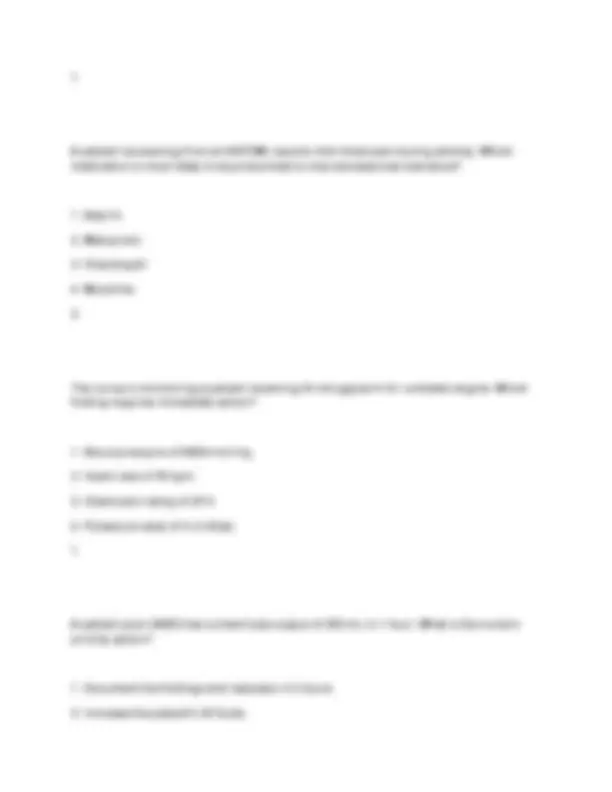
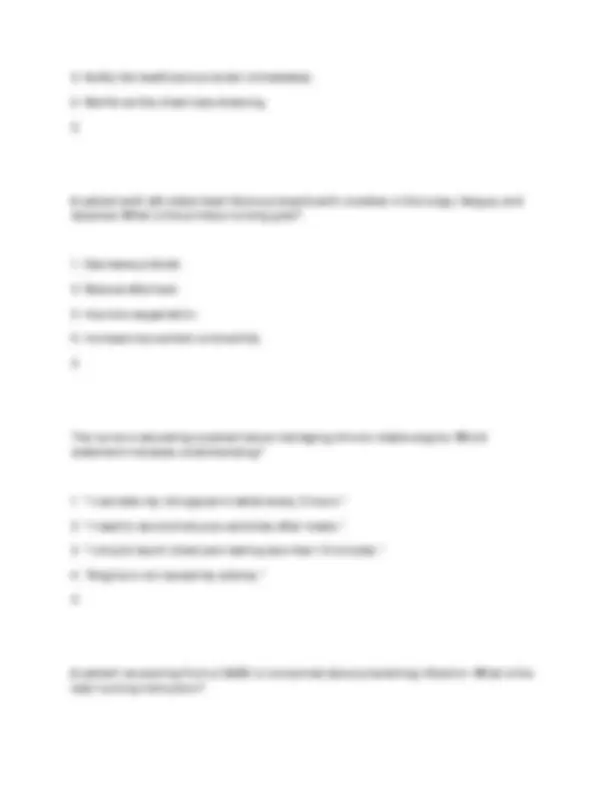
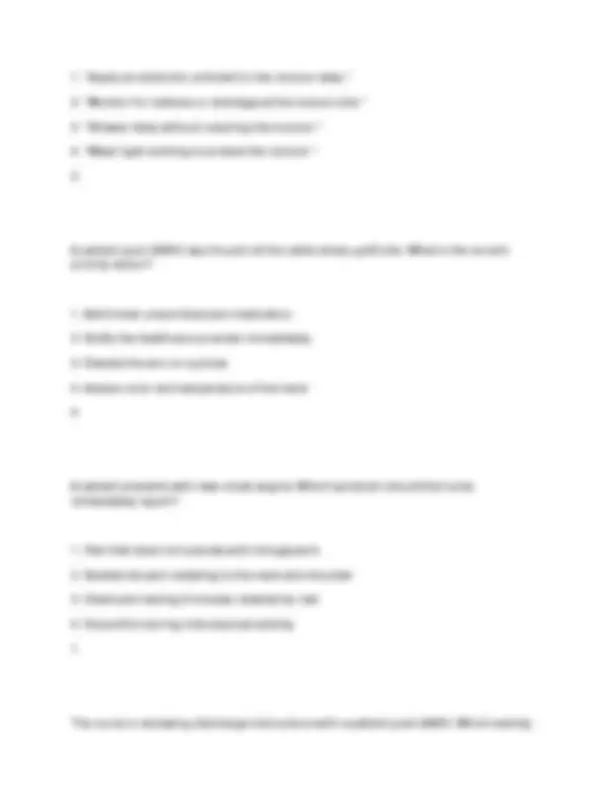
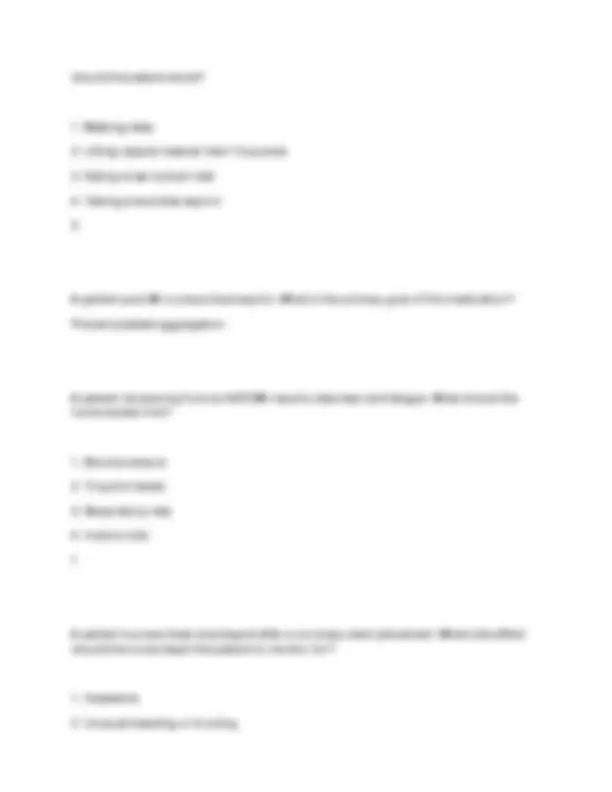
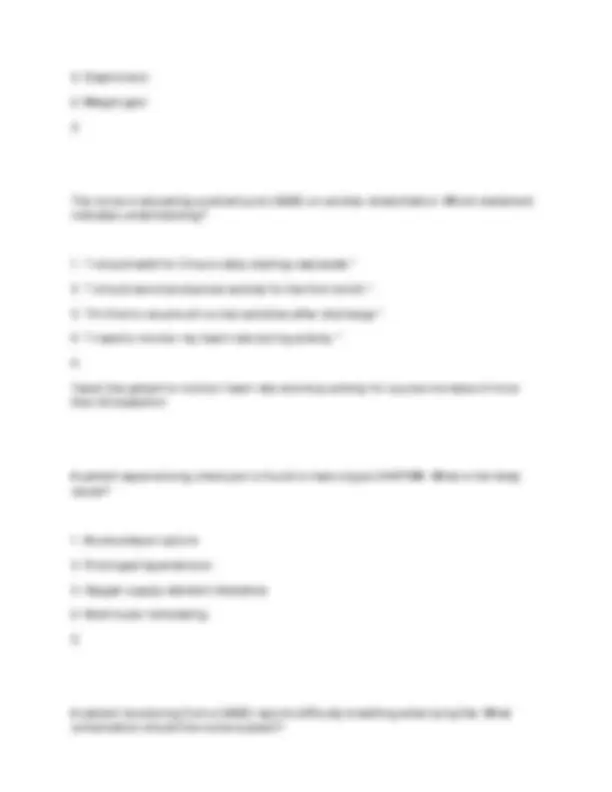
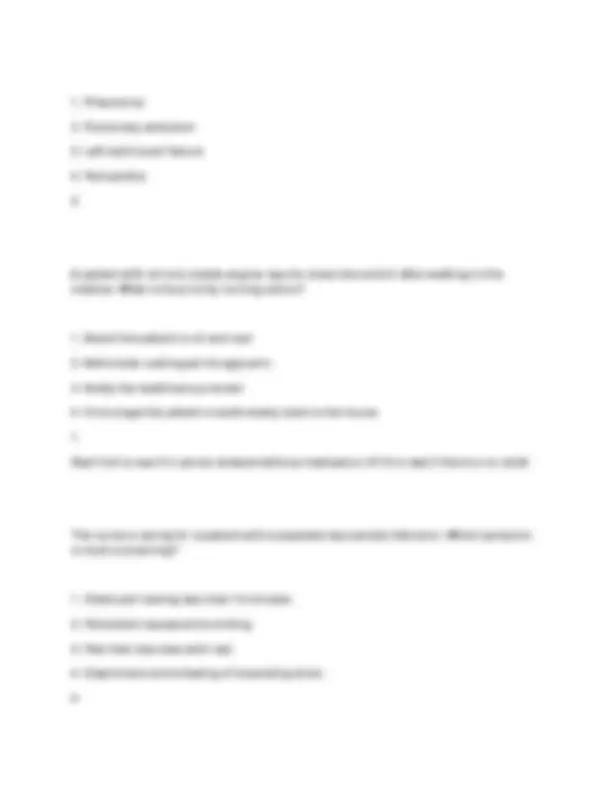
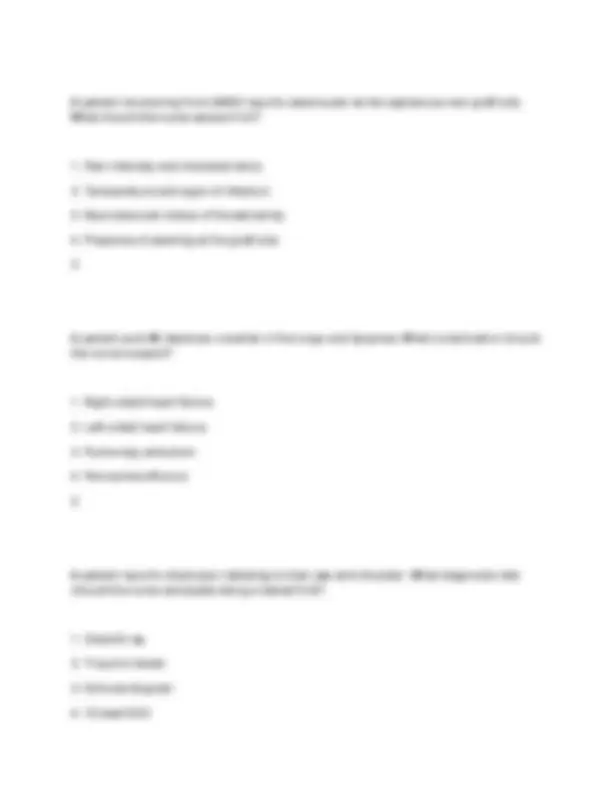
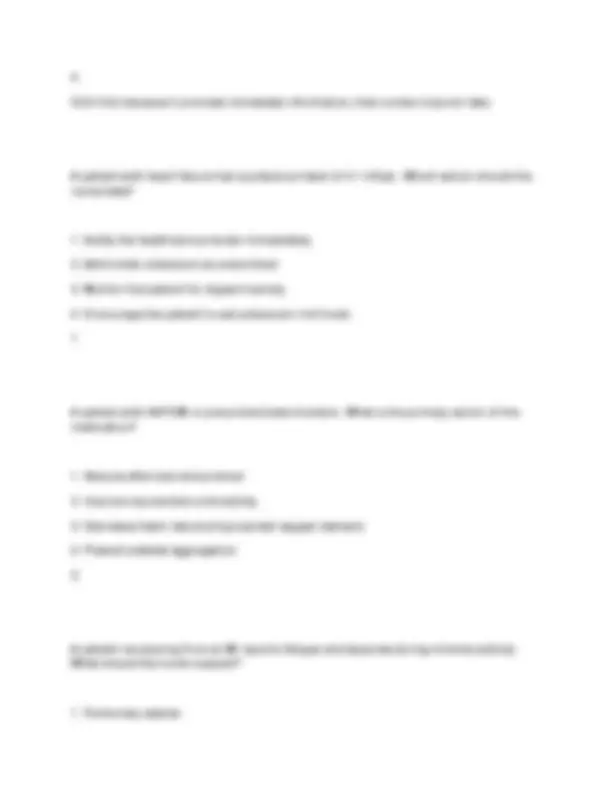
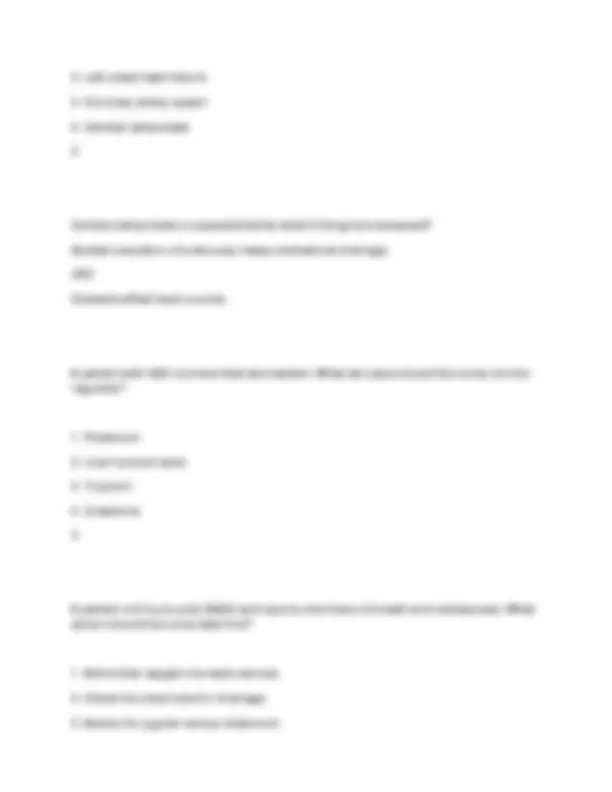
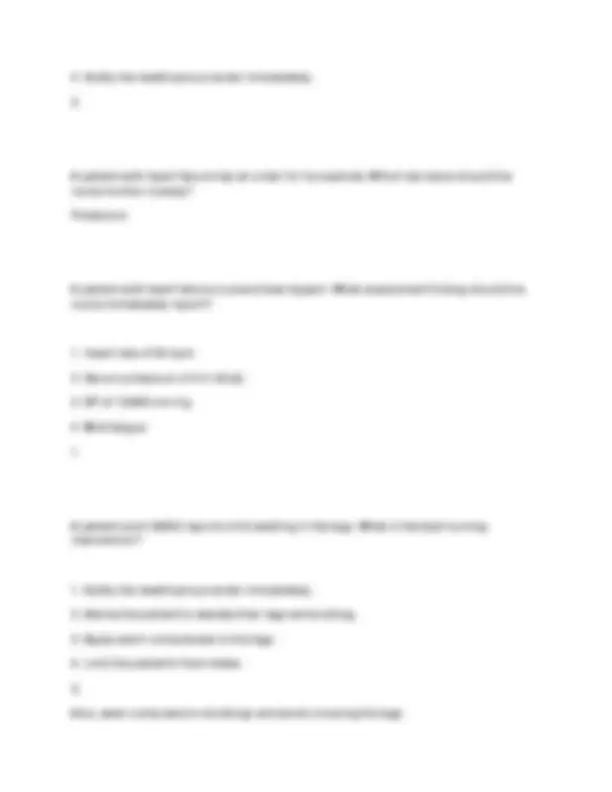
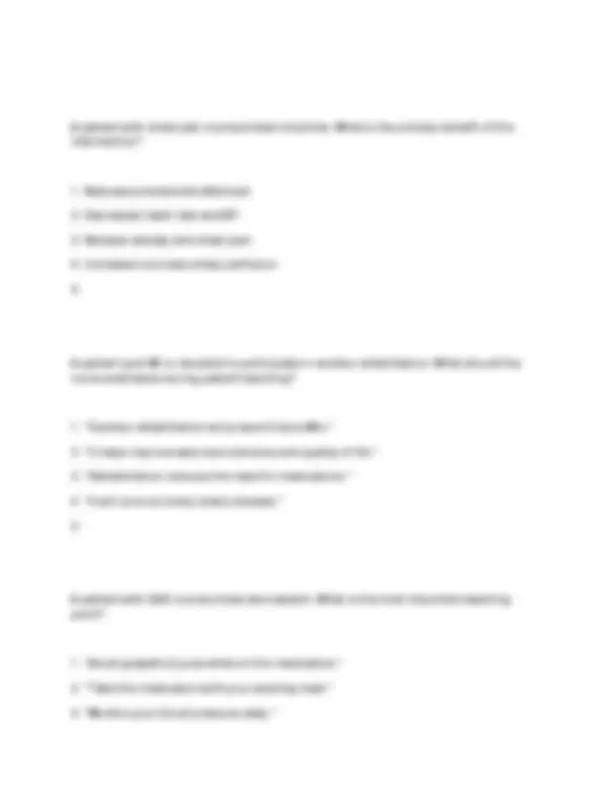
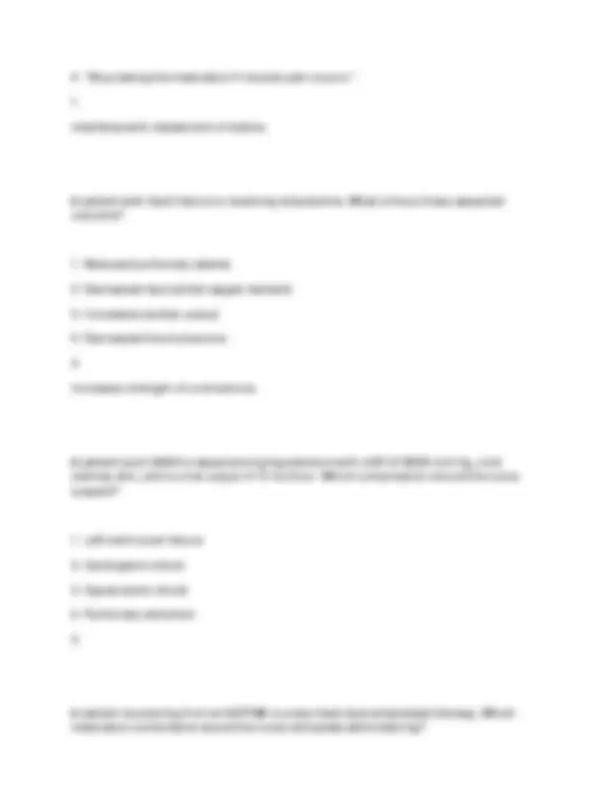
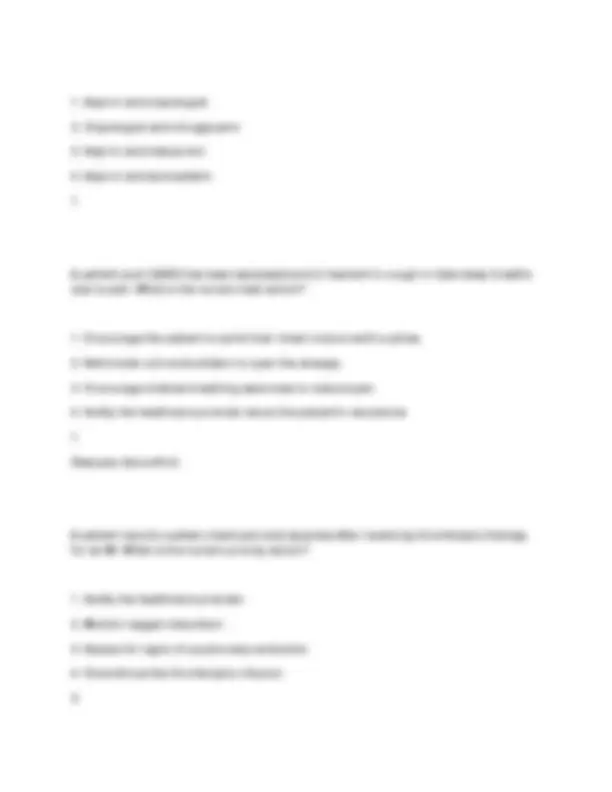
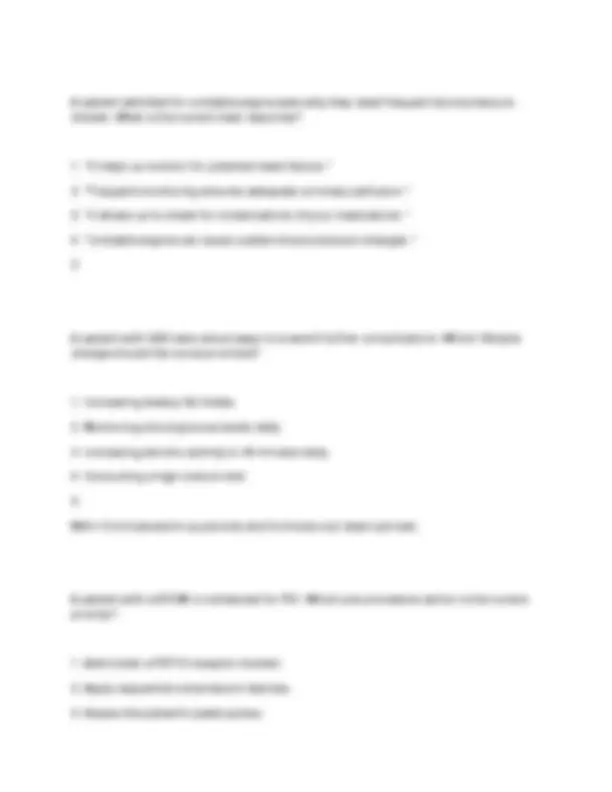
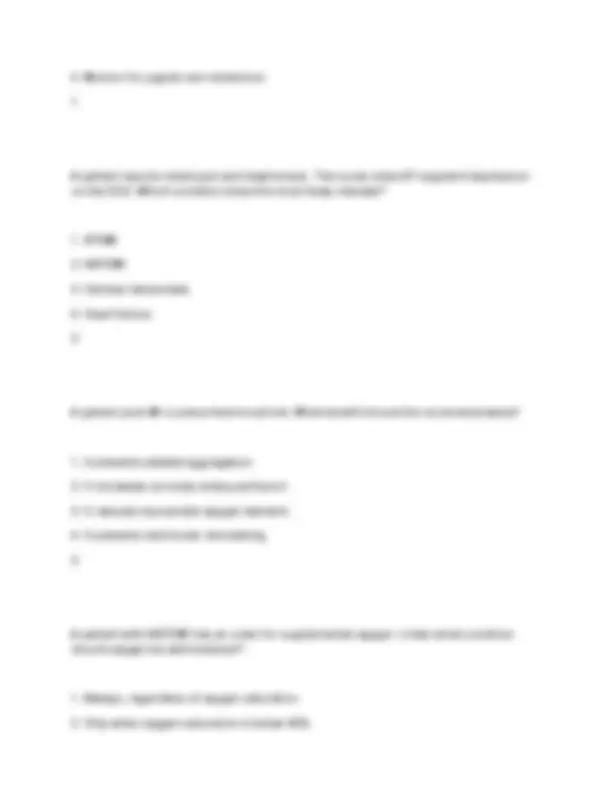
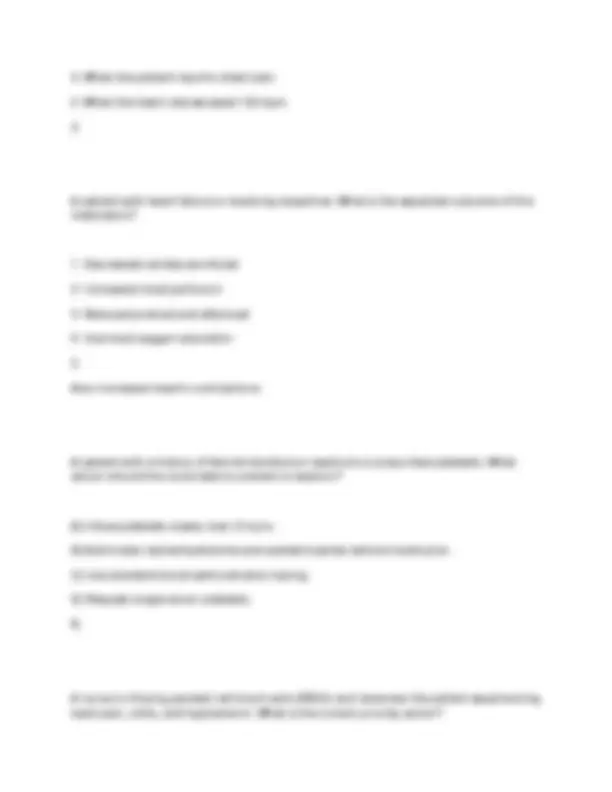
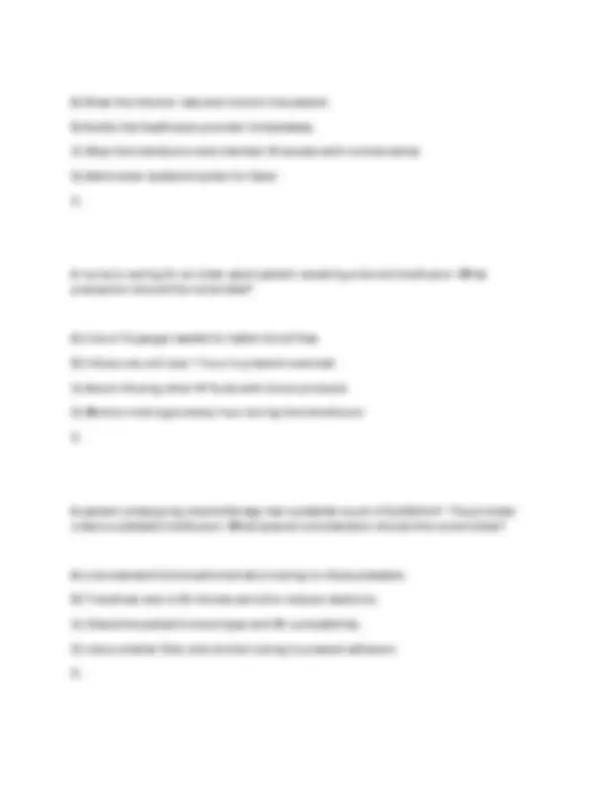
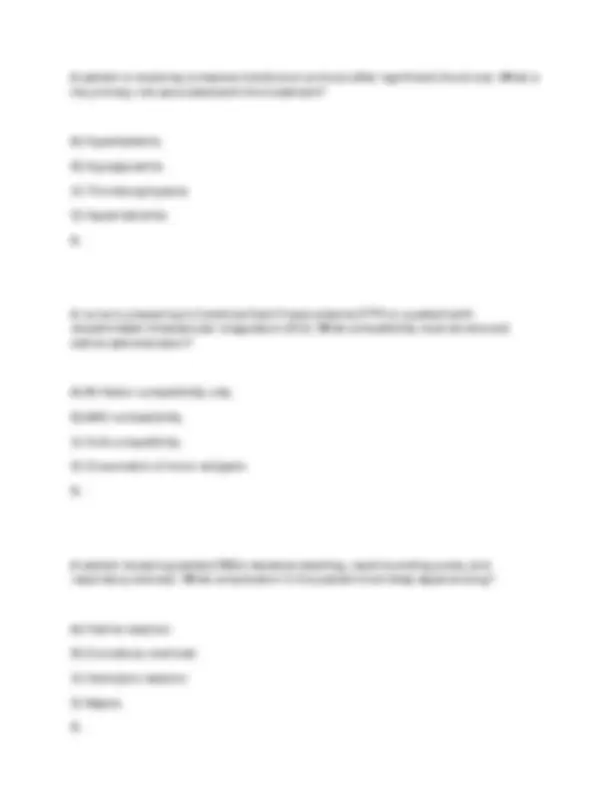
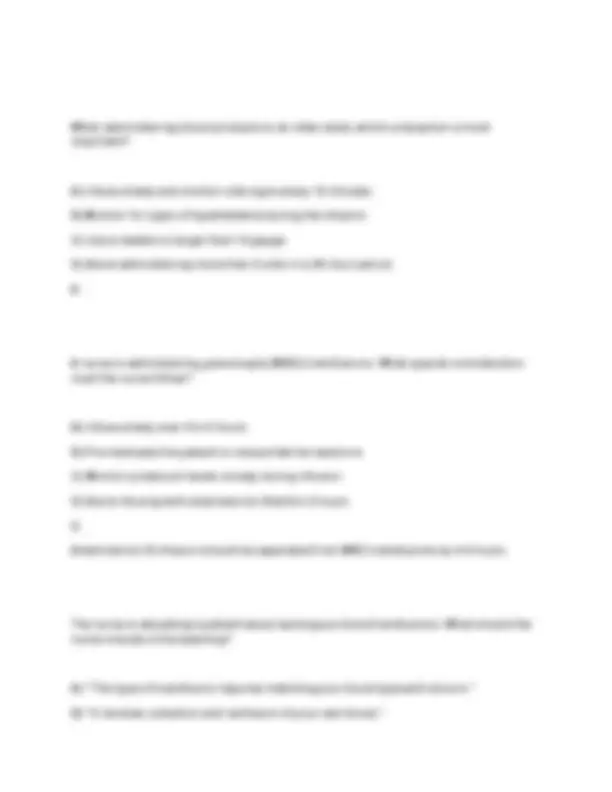
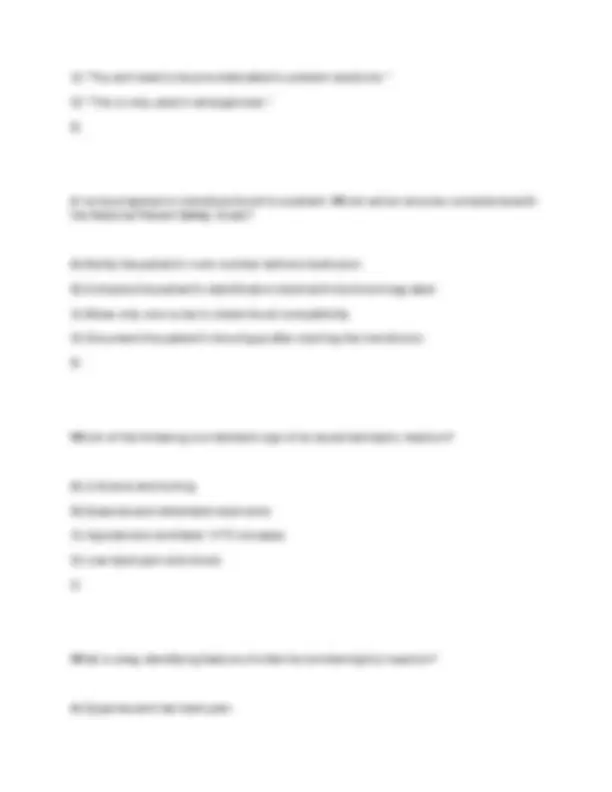
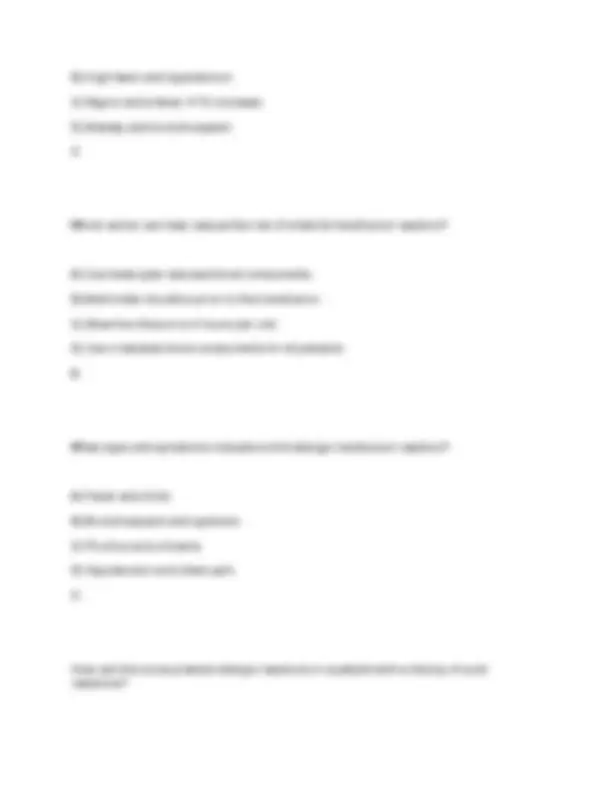
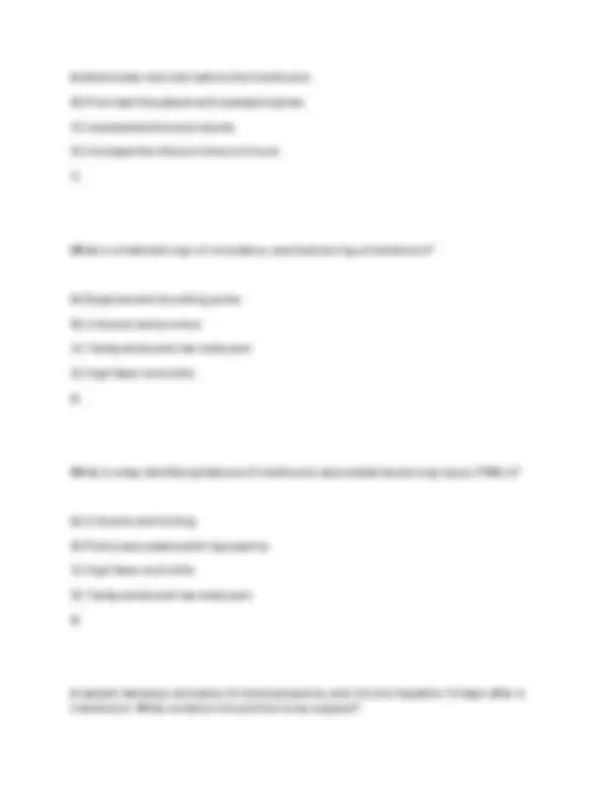
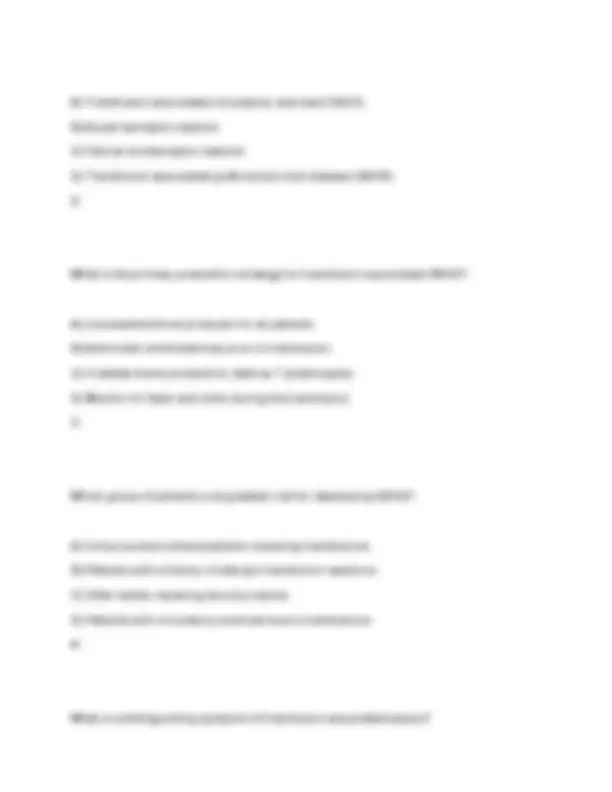
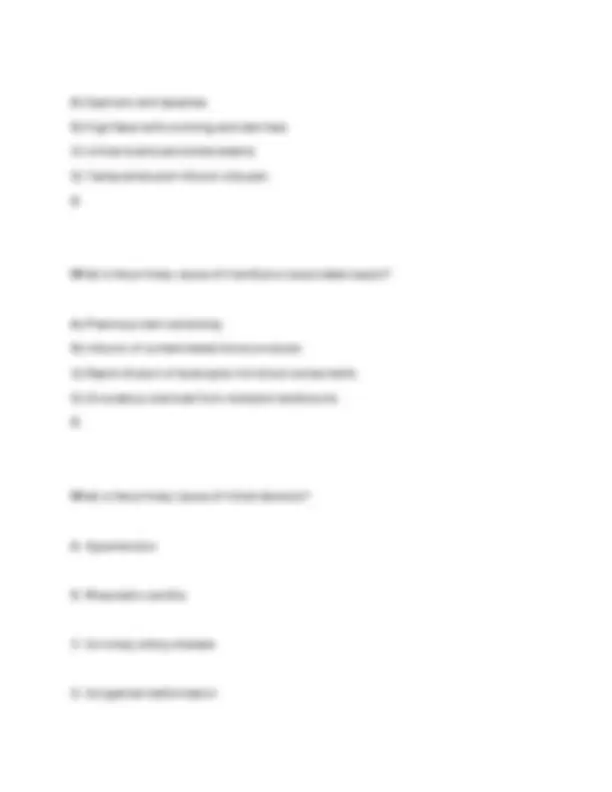


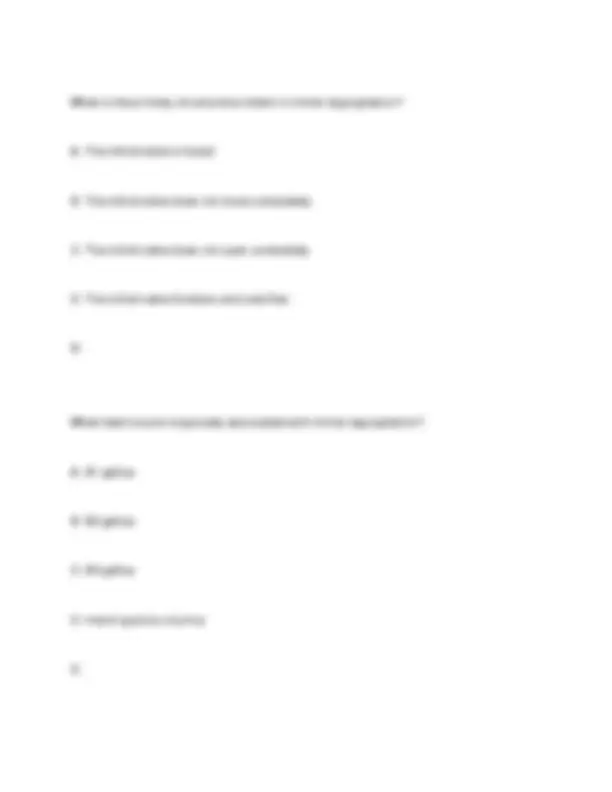





Study with the several resources on Docsity

Earn points by helping other students or get them with a premium plan


Prepare for your exams
Study with the several resources on Docsity

Earn points to download
Earn points by helping other students or get them with a premium plan
Community
Ask the community for help and clear up your study doubts
Discover the best universities in your country according to Docsity users
Free resources
Download our free guides on studying techniques, anxiety management strategies, and thesis advice from Docsity tutors
A comprehensive set of questions and answers covering key concepts in cardiology, specifically focusing on acute coronary syndrome (acs), myocardial infarction (mi), and angina pectoris. it delves into the pathophysiology, diagnosis, and treatment of these conditions, making it a valuable resource for students studying cardiovascular disease. The questions cover various aspects, including the differences between stable and unstable angina, the types of mi, and the management of these conditions. the detailed answers provide a solid understanding of the subject matter.
Typology: Exams
1 / 116

This page cannot be seen from the preview
Don't miss anything!





























































































__________ _________________ ______________ results from obstruction of the coronary artery by ruptured atherosclerotic plaque and leads to platelet aggregation, thrombus formation, and vasoconstriction.
What 2 complications does this disorder include? Acute coronary syndrome (ACS).
Unstable angina and MI.
____________ _________________ is chest pain caused by a temporary imbalance between the coronary arteries' ability to supply oxygen and the cardiac muscle's demand for oxygen. Angina pectoris.
What is the main goal of cardiac rehabilitation? Assist patients with coronary disease to achieve and maintain a productive life while remaining within the limits of the heart's ability to respond to increases in activity and stress.
__________________________ ____________ is post-MI heart failure in which necrosis of more than 40% of the left ventricle has occurred (this is also called class IV heart failure). Cardiogenic shock.
______________ _______________ _______________ is a type of angina characterized by chest discomfort that occurs with moderate to prolonged exertion and in a pattern that is familiar to the patient. Chronic stable angina (CSA).
__________________ _________________ _________________ ____________________ is a surgical procedure in which occluded arteries are bypassed with the patient's own venous or arterial blood vessels or synthetic grafts. Coronary artery bypass grafting (CABG).
___________________ _________________ ________________ is a disease affecting the arteries that provide blood, oxygen and nutrients to the myocardium. Coronary artery disease (CAD).
What term refers to necrosis, or cell death? Infarction.
_________________ is a lack of adequate oxygen to a certain part of the body. Ischemia.
______________________ ___________________ is injury and necrosis of myocardial tissue that occurs when the tissue is abruptly and severely deprived of oxygen.
_________________ occurs when severe ischemia is prolonged and decreased perfusion causes irreversible damage to tissue. Infarction.
What is the single largest killer of American men and women in all racial/ethnic groups? CAD.
CSA results in _________________ (slight or severe) limitation of activity and is usually associated with what as the cause? Slight.
Fixed atherosclerotic plaque.
CSA is typically relieved by _______________________ or _____________. Nitroglycerin. Rest.
CSA is often managed with drug therapy.
ACS is a term used to describe patients who have: Unstable angina or an acute MI.
In ACS, atherosclerotic plaque in the coronary artery ruptures. The amount of disruption of the plaque determines the obstruction. Once the artery reaches ______% occlusion, blood flow is impaired, creating ischemia when myocardial demand is increased. 50%.
In UA, activity limitation is ________________ (slight or severe) and pressure may last longer than _____ minutes. Severe.
T or F. UA is usually relieved by nitroglycerin and/or rest. False.
Patients with UA may present with ST changes on a 12-lead EKG but do not have changes in troponin levels, how? Ischemia is present but is not severe enough to cause detectable myocardial damage or cell death.
T or F. Pre-MI, patients may have angina that occurs in the days or weeks before an MI. True.
Ischemia develops when blood flow is quickly reduced by _____-_____%. 80-90%.
Zone of injury (tissue that is injured but not necrotic). Zone of ischemia (tissue that is oxygen deprived).
Obvious physical changes do not occur in the heart until ____ hours after the infarction, when the infarcted region appears blue and swollen.
With an MI, intervention is NEEDED within the first ____-____ hours of symptom onset. 4-6.
After an MI, scar tissue can form and is often the cause of chronic ventricular dysrhythmias, why? The left ventricle may have decreased function (ventricular remodeling). The scar tissue does not contract, nor does it conduct electrically.
To prevent CAD, cholesterol intake should be less than ________ mg/day.
To prevent CAD, sodium intake should be less than __________ mg/day.
To prevent CAD, you should exercise moderately ____-____ times each week (about 40
minutes each session).
If you cannot exercise this much, you should walk at a comfortable pace for ____ minutes daily. 3-4.
What is the average age of a person having a first time MI? 65 for men. 72 for women.
What are some pain descriptors that have a high probability of being related to ischemia? Central/Left-sided. Pressure. Squeezing. Gripping. Heaviness. Tightness. Exertional/Stress-related. Retrosternal. Aching.
What are some pain descriptors that have a low probability of being related to ischemia?
Epigastric distress. Anxiety. Dizziness. Disorientation/acute confusion. SOB.
How is pain related to angina different than pain related to MI? Angina pain is: Usually precipitated by exertion or stress. Usually relieved by nitroglycerin or rest. Usually lasts less than 15 minutes. There are usually few, if any, associated symptoms.
What are some symptoms of cardiac ischemia that were historically termed as atypical, but are now related specifically to symptoms in women? Indigestion. Pain between shoulders. Aching jaw. Choking sensation. Unusual fatigue. Dizziness. Flulike symptoms.
The major manifestation of MI in people older than 80 years may be acute _________________.
Why are there some older adults with MI that have an absence of chest pain? Confusion.
Absence of pain can be caused by cognitive impairment or inability to verbalize pain sensation.
What dysrhythmias frequently occur in the first few hours after an MI? Sinus tachycardia with premature ventricular contractions (PVCs).
What heart sound often indicates heart failure (serious and common complication of MI)? S3 gallop.
T or F. The patient with MI may experience a temperature elevation for several days after infarction. True. Temperatures as high as 102 F (38.9 C) may occur in response to myocardial necrosis, indicating the inflammatory response.
An EKG should be obtained within ____ minutes of patient presentation with chest discomfort.
When ischemia persists, the HCP may order IV nitroglycerin. The infusion should be started slowly, BP and pain level should be checked every ____-____ minutes. 3-5. The nitroglycerin dose is increased until the pain is relieved, BP falls too much, or the max dose is reached.
What does morphine do for patients experiencing ischemia? Decreases pain. Decreased myocardial oxygen demand. Relaxes smooth muscle. Reduces circulating catecholamines.
HCPs frequently prescribe __________ or _________ within 24 hours of ACS to prevent ventricular remodeling and the development of heart failure. ACEIs or ARBs.
T or F. After a STEMI all patients in the absence of contraindications should receive either an ACEI or an ARB, as both of these medications increase survival after an MI. True.
Before discharge, all patients diagnosed with ACS should be started on high intensity _____________ therapy despite results of lipid panel testing. Statin.
Fibrinolytic therapy (thrombolytic therapy) should be administered within ____ minutes of STEMI confirmation. 10 (contraindications: Previous intracranial hemorrhage, active bleeding, and significant trauma within 3 months).
During fibrinolytic therapy, what are indications that the clot has been lysed and the artery reperfused? Abrupt cessation of pain or discomfort. Sudden onset of ventricular dysrhythmias. Resolution of ST-segment depression/elevation or T-wave inversion.
After fibrinolytic therapy, what medications are given to ensure the artery remains patent? Aspirin. IV heparin.
What is the therapeutic PTT (partial thromboplastin time) while on heparin? 50-70 seconds. 1.5-2x the baseline.
_____________________________ _____________________ _____________________ is an invasive but nonsurgical technique that is the treatment of choice to reopen the clotted coronary artery and restore perfusion. Percutaneous Coronary Intervention (PCI).
Stents.
During stent placement, the patient may receive boluses of IV _______________ to prevent clotting on wires and catheters. Heparin.
Immediately after stent placement procedure, how long are patients continued on the IV heparin? Usually stopped immediately after the procedure, allowing the access sheath to be removed once clotting time returns to normal.
After PCI, patients may experience ______________________, requiring careful monitoring and the use of ______________________ supplements. Hypokalemia. Potassium.
After PCI, what potential problems need to be monitored for? Acute closure of the vessel (causes chest pain and potential ST-elevation). Bleeding from insertion site. Reaction to the contrast medium used in angiography. Hypotension. Hypokalemia. Dysrhythmias.
Document any of these findings to the HCP or rapid response team right away.
_________________________ are the leading cause of prehospital death in most patients with ACS. Dysrhythmias.
T or F. Most patients with ACS experience some abnormal cardiac rhythm. True.
Dysrhythmias are treated when they cause: Hemodynamic compromise. Increased myocardial oxygen requirements. Predispose the patient to lethal ventricular dysrhythmias.
Decreased cardiac output due to heart failure is a relatively common complication after an MI resulting from: Left ventricular dysfunction. Rupture of the intraventricular septum. Papillary muscle rupture with valvular dysfunction. Right ventricular infarction.
Assess for manifestations of left ventricular failure and pulmonary edema by listening for _________________.
How is class I heart failure described? Absent crackles and S3.
Often responds well to reduction in preload with IV nitrates and diuretics.
How is class II heart failure described? Crackles in the lower half of the lung fields and possible S3.
May require diuresis and more aggressive medical intervention, such as afterload reduction and/or enhancement of contractility. Often started on once-a-day beta blockers.
How is class III heart failure described? Crackles more than halfway up the lung fields and frequent pulmonary edema.
May require diuresis and more aggressive medical intervention, such as afterload reduction and/or enhancement of contractility. Often started on once-a-day beta blockers.
How is class IV heart failure described? Cardiogenic shock.
Necrosis of more than 40% of the left ventricle.
S/S of cardiogenic shock must be reported right away, what are they? Tachycardia. Hypotension. Systolic < 90 mm Hg or 30 mm Hg less than patient's baseline. Urine output less than 0.5-1 mL/kg/hr. Cold, clammy skin with poor peripheral pulses. Agitation, restlessness, or confusion. Pulmonary congestion. Tachypnea. Continuing chest discomfort.
T or F. The right ventricle has its own unique structure and will not fail due to left ventricular failure. False. The right ventricle can fail due to left ventricular failure.
In a __________________ ________________ __________________ _____________________ surgery, the occluded coronary arteries are bypassed with the patient's own venous or arterial blood vessels or synthetic grafts. Coronary Artery Bypass Grafting (CABG).
For a CABG, the __________________ __________________ ___________________ is often the graft of choice because it has an excellent patency rate many years post-op. Internal thoracic artery (internal mammary artery).